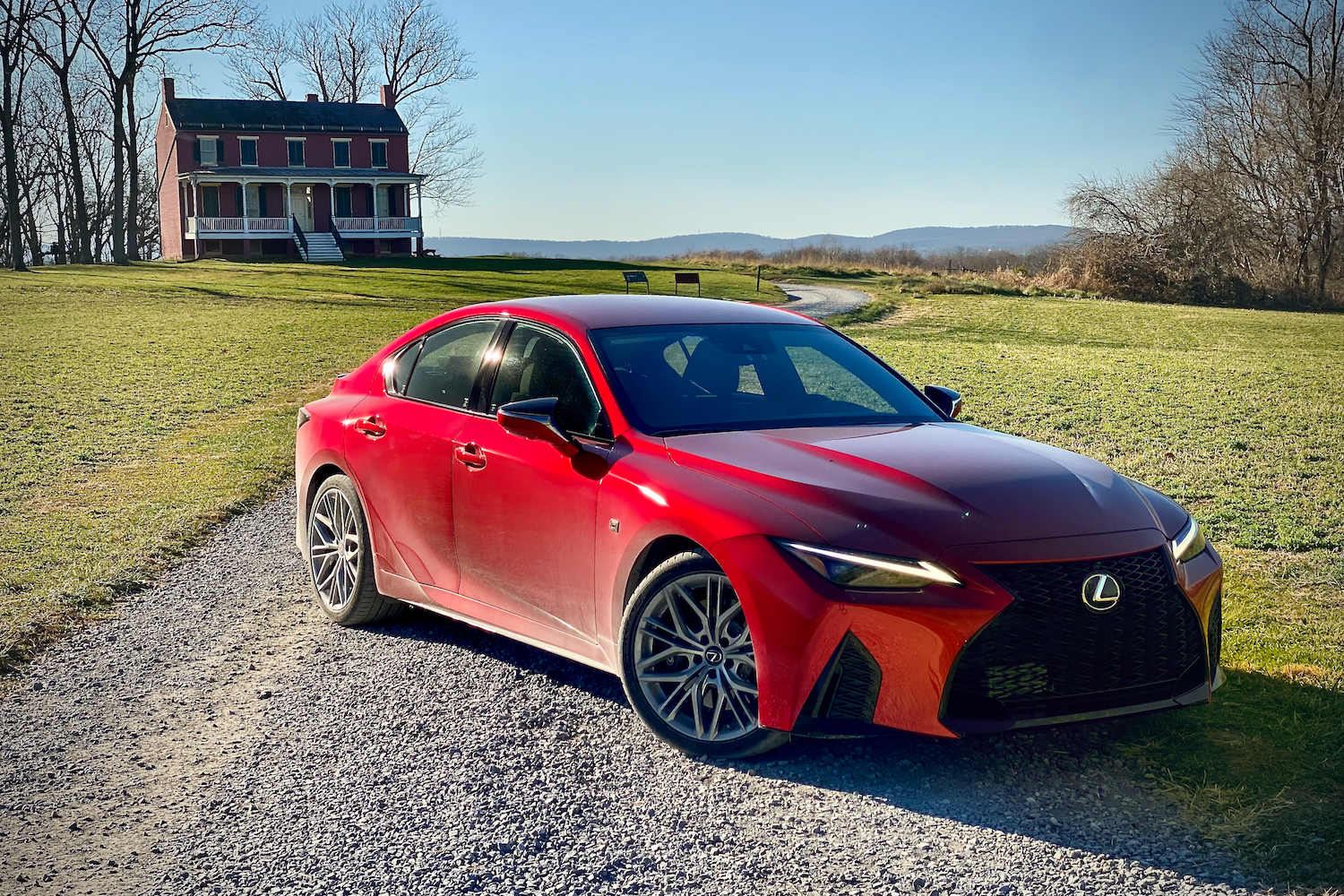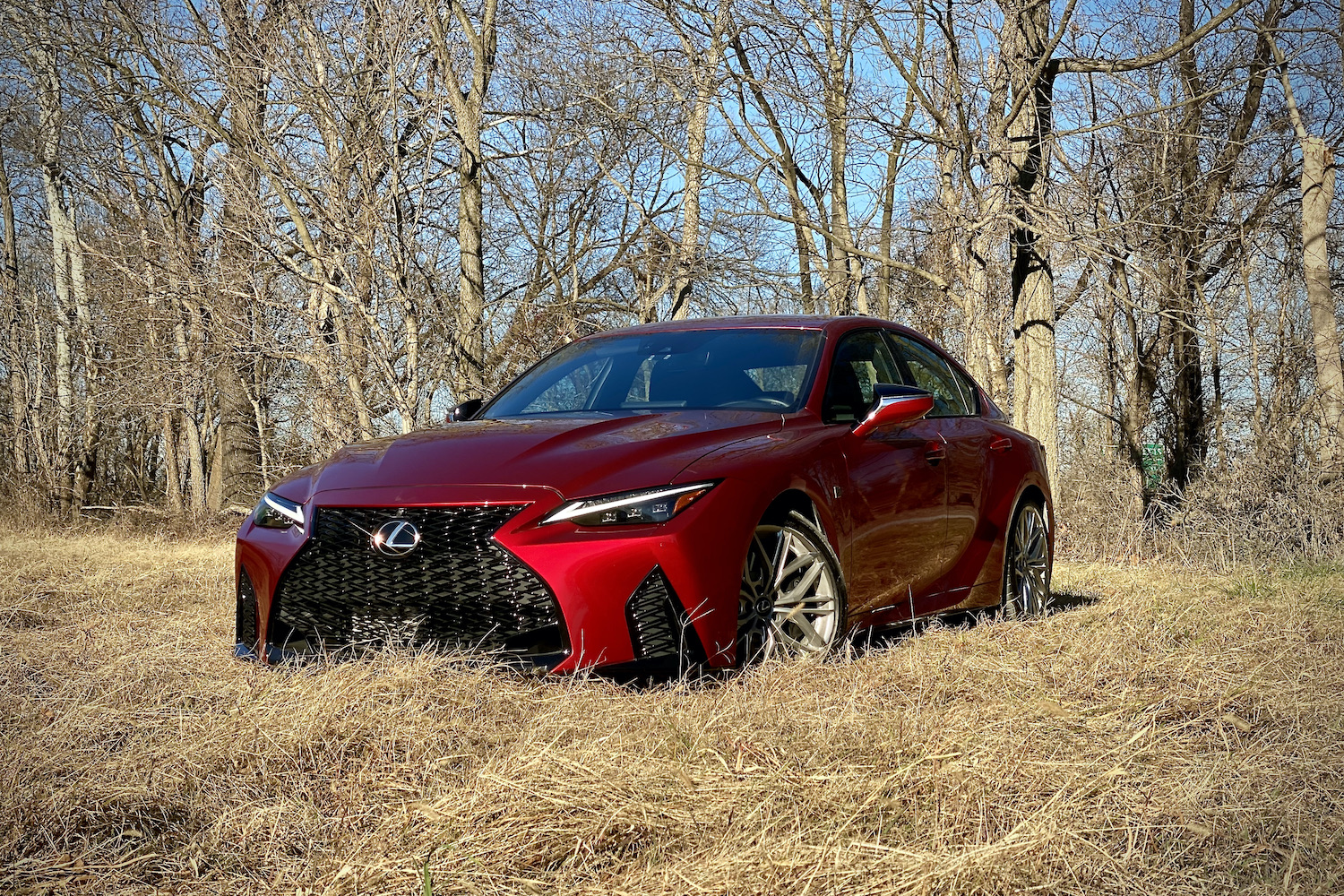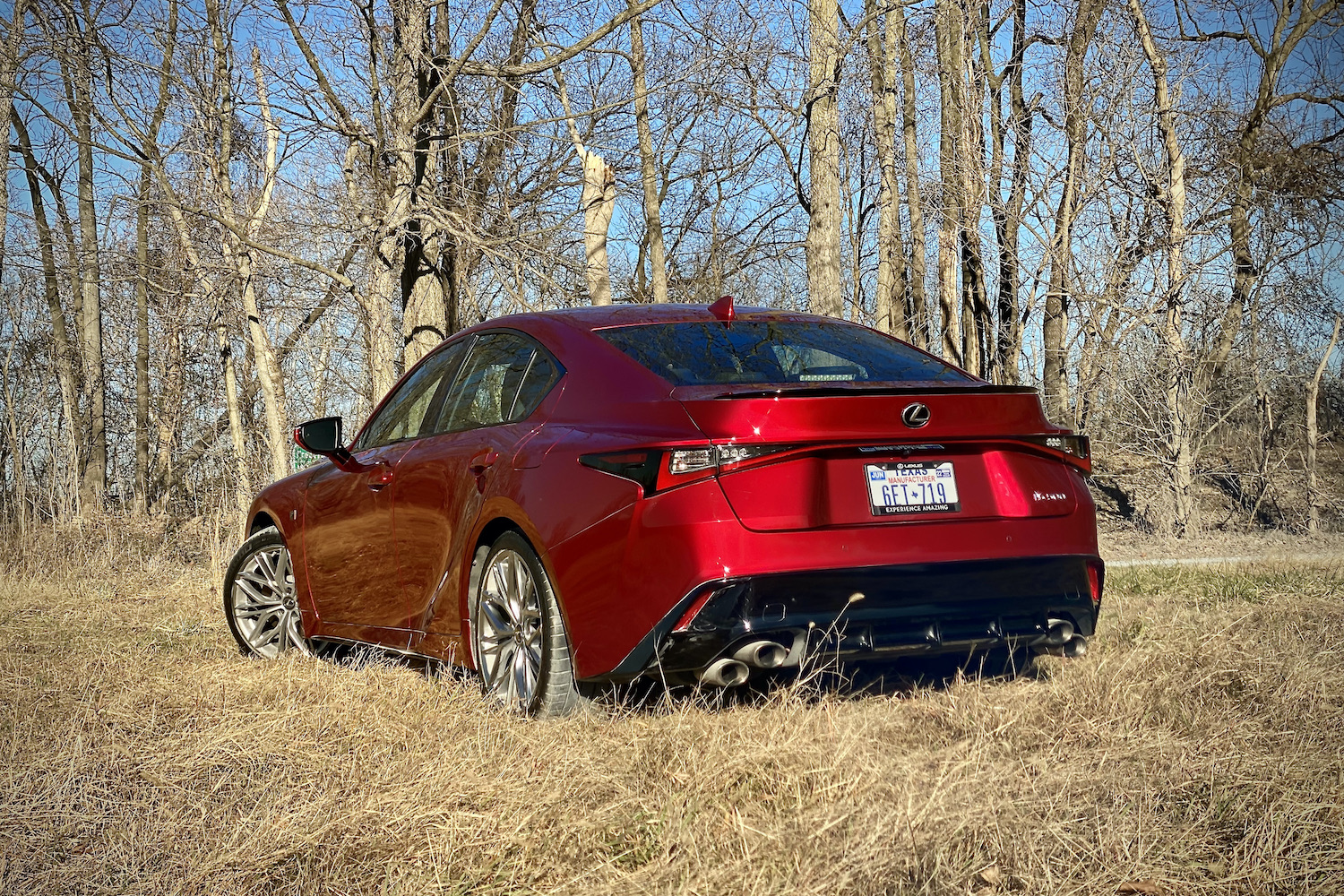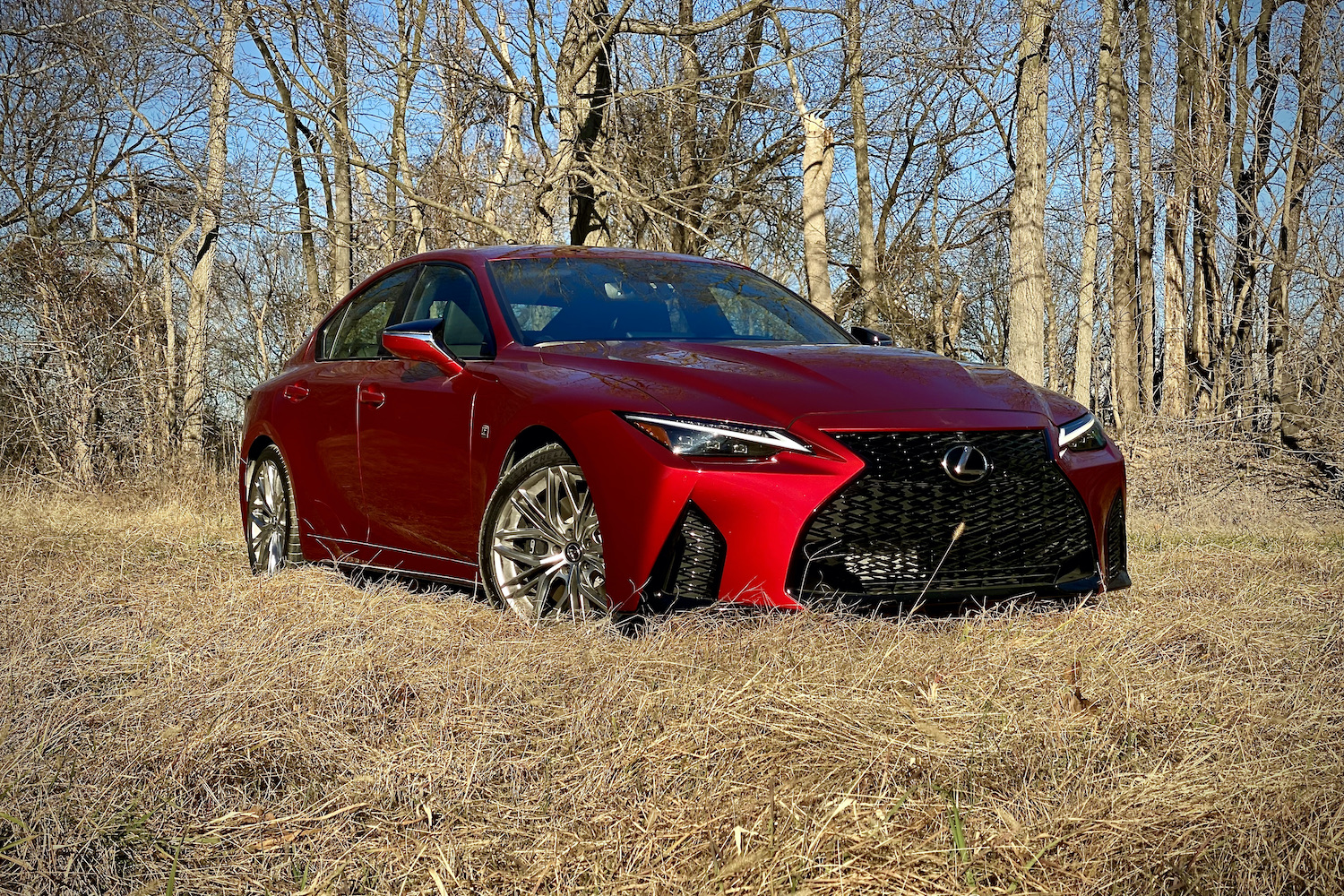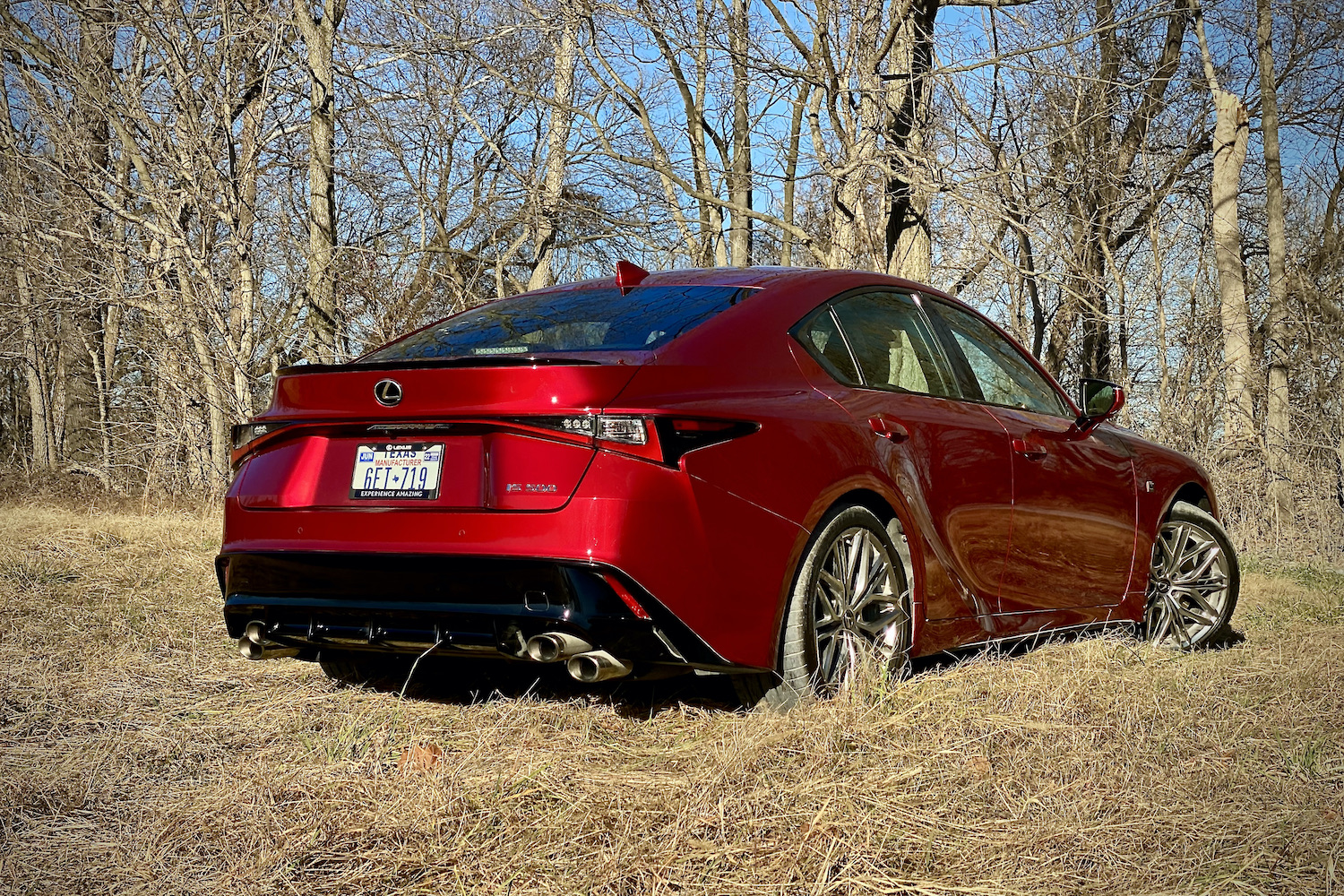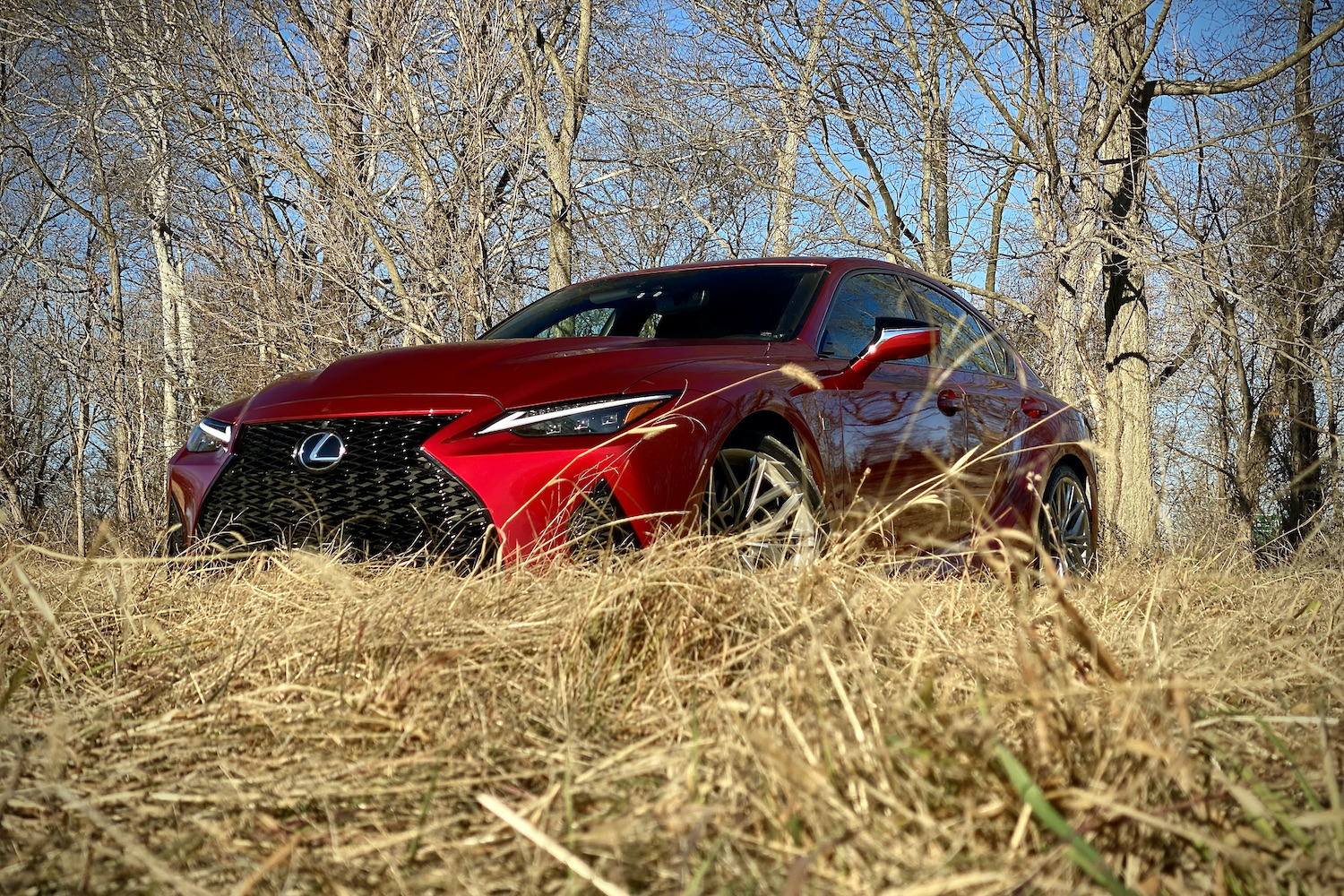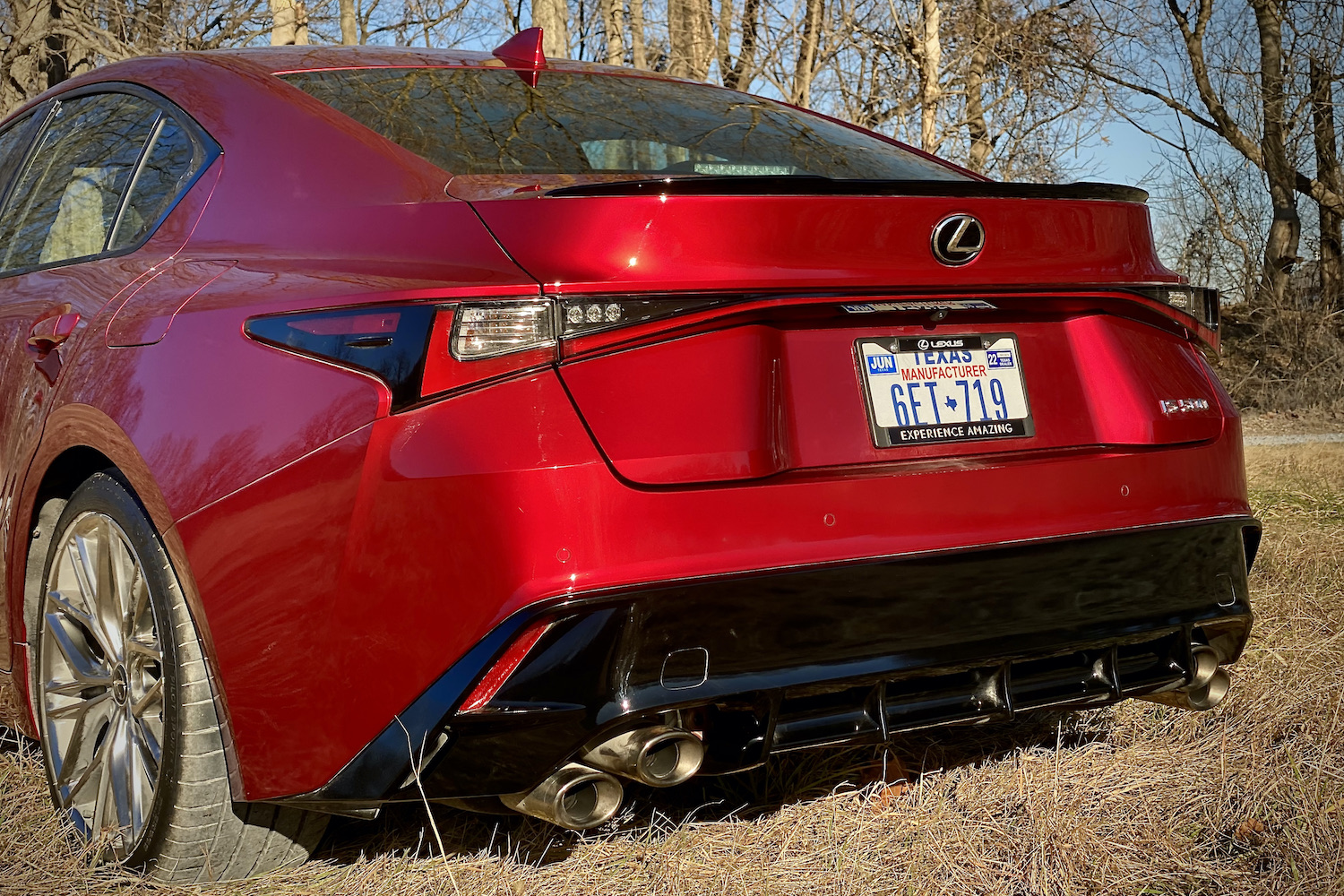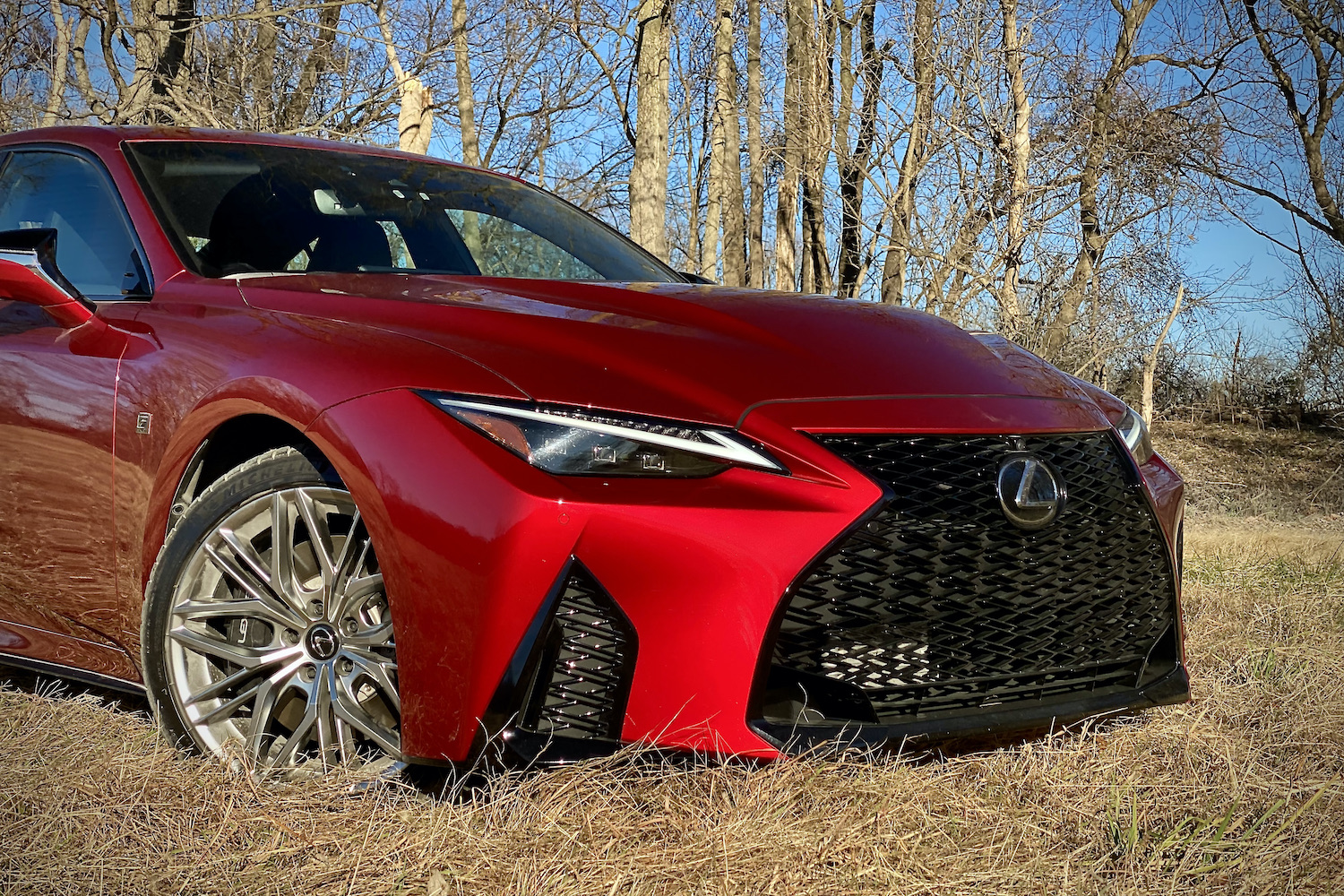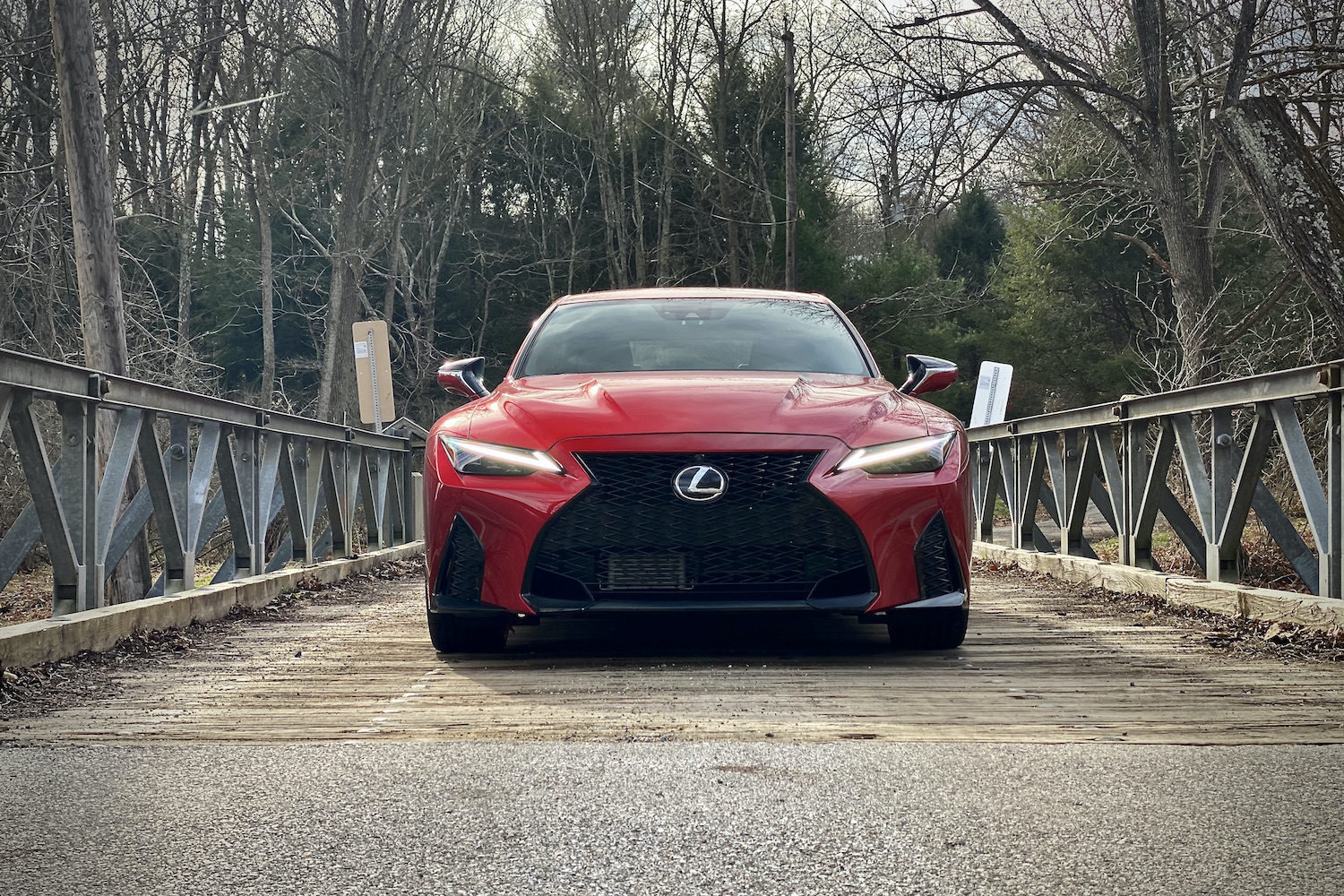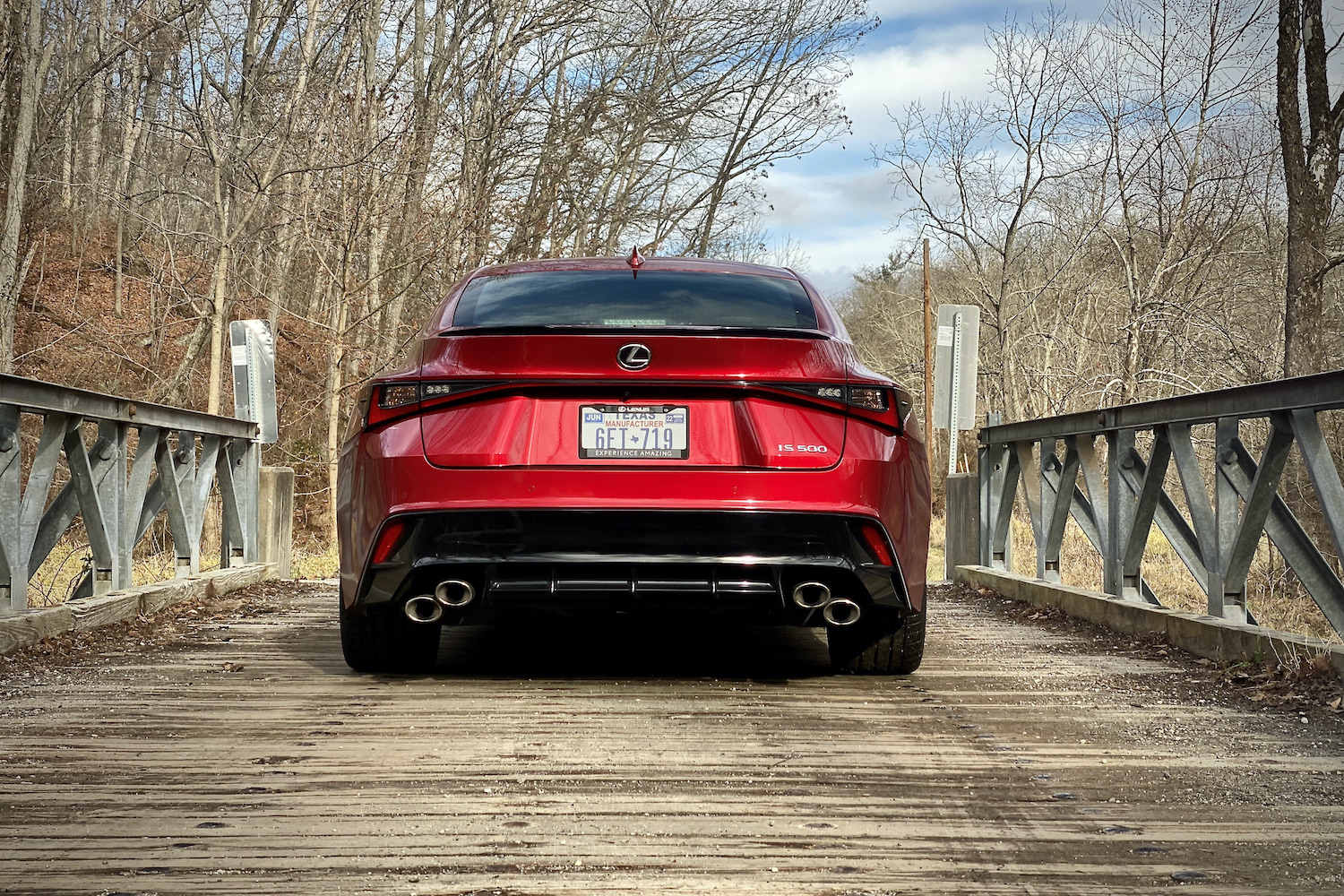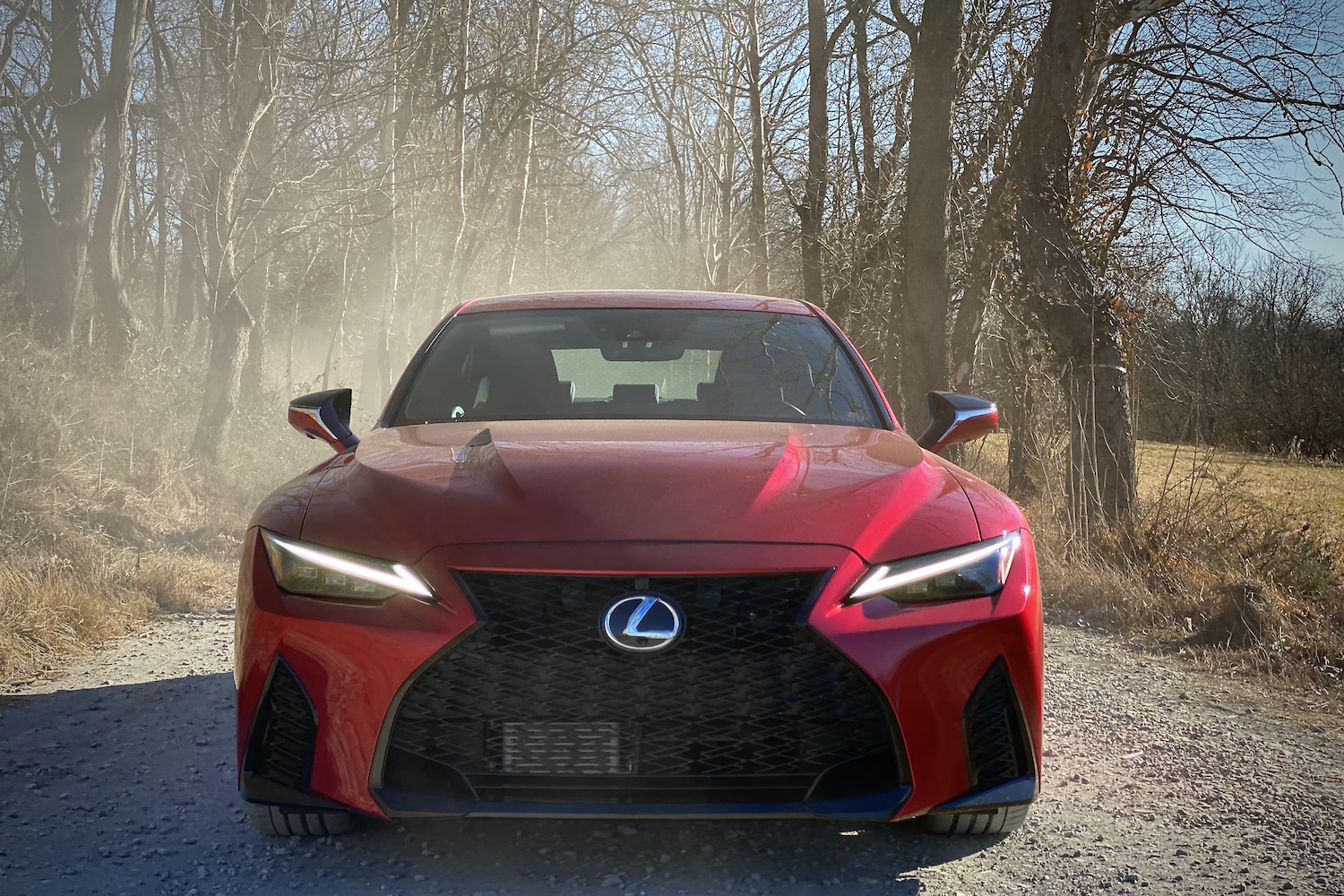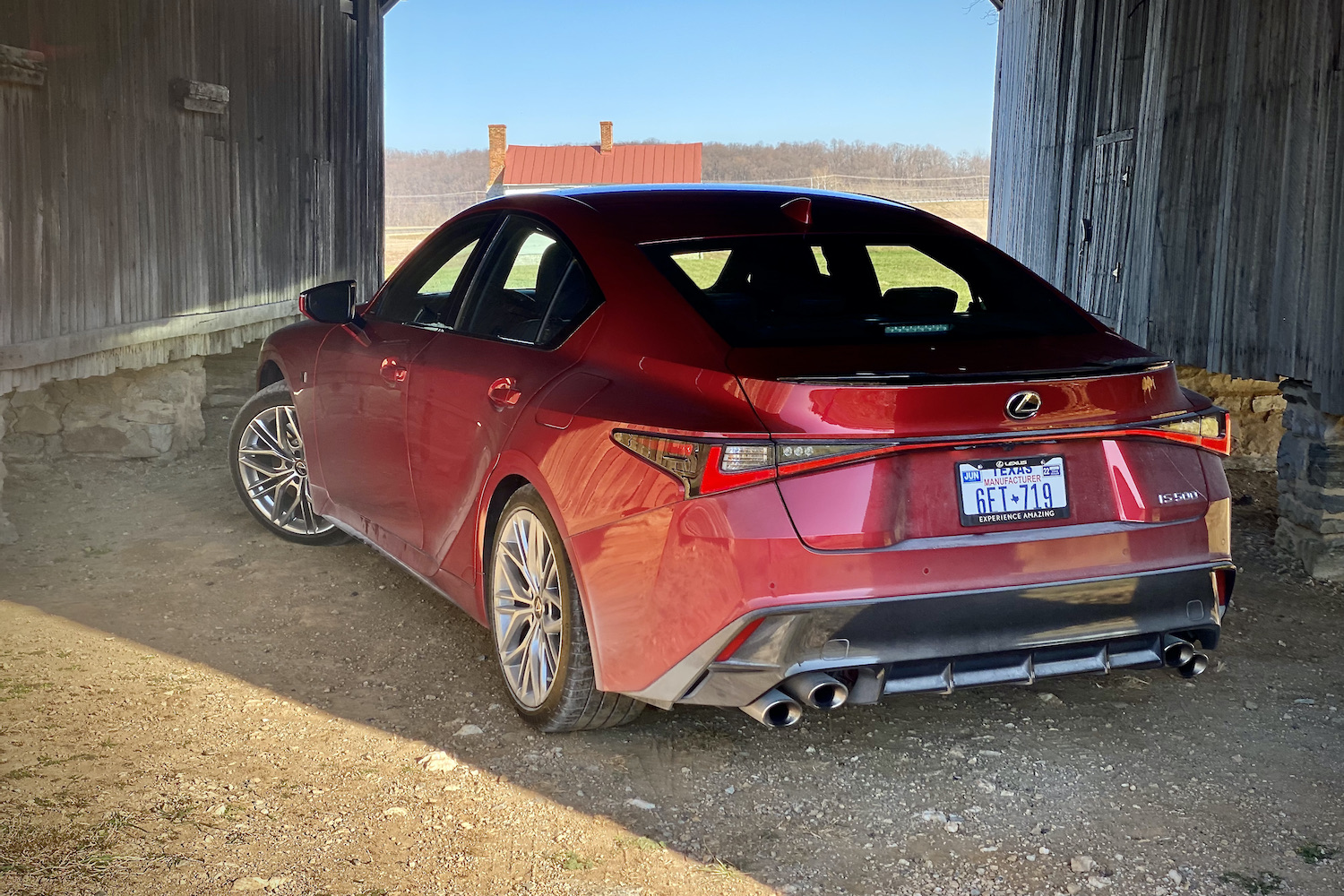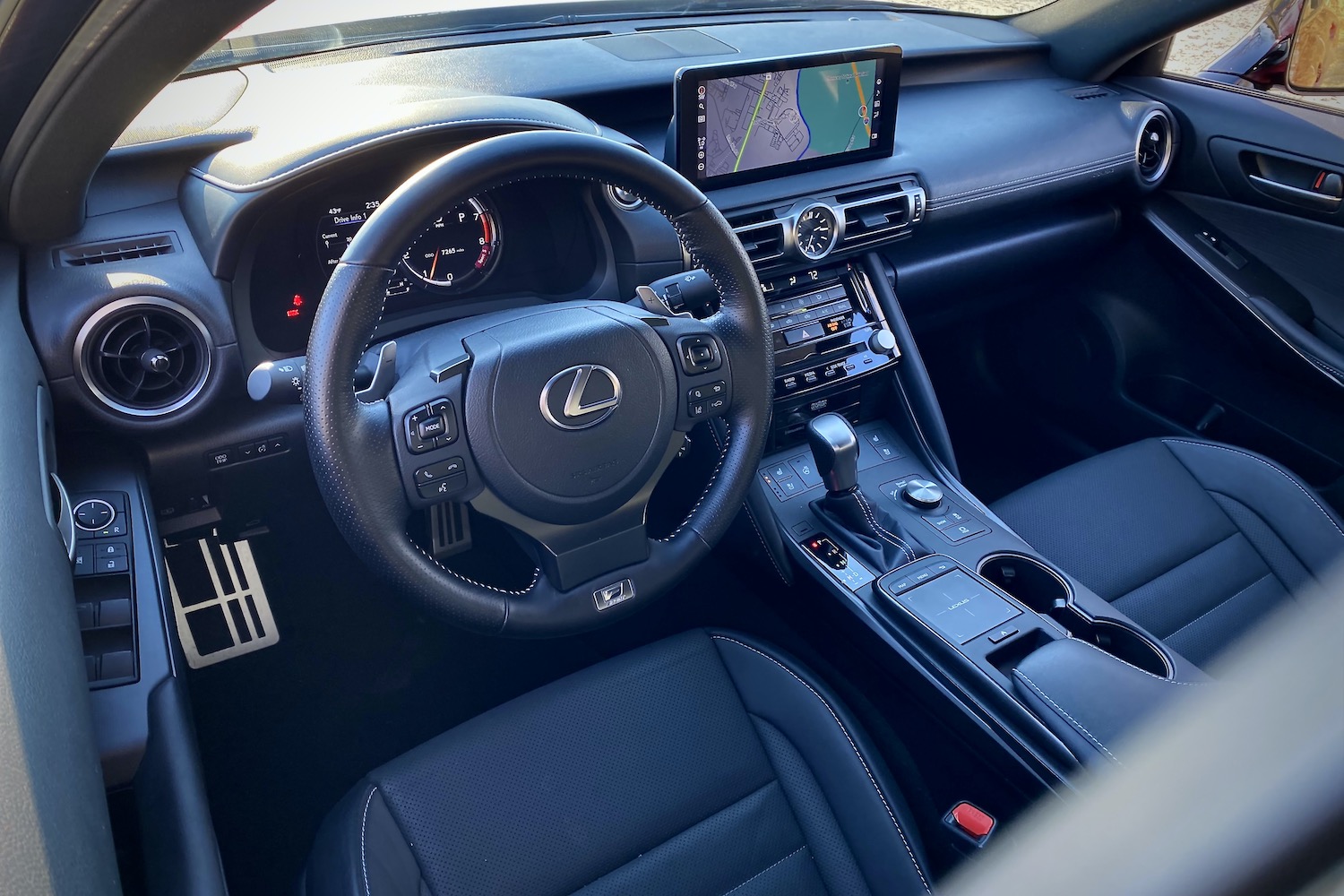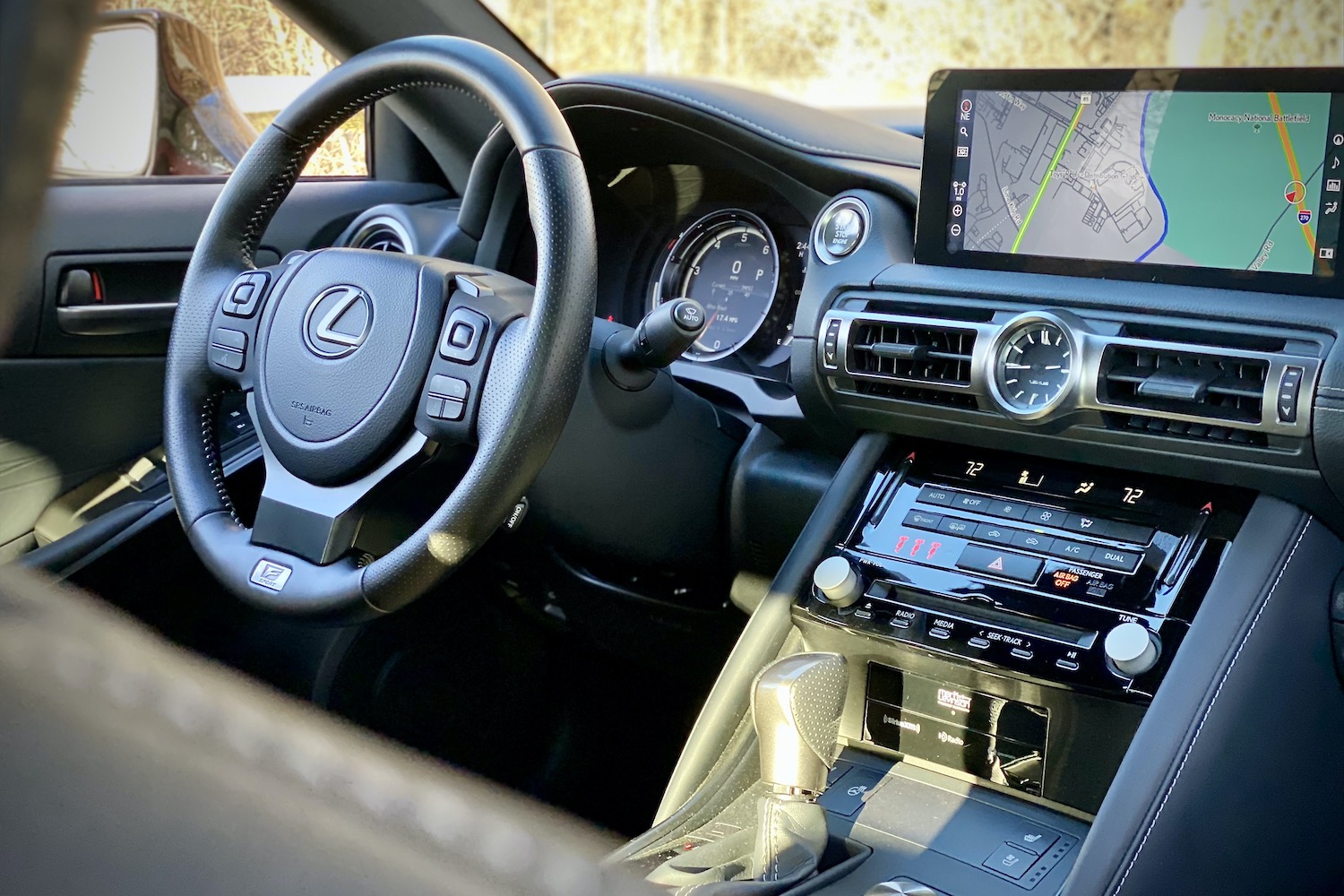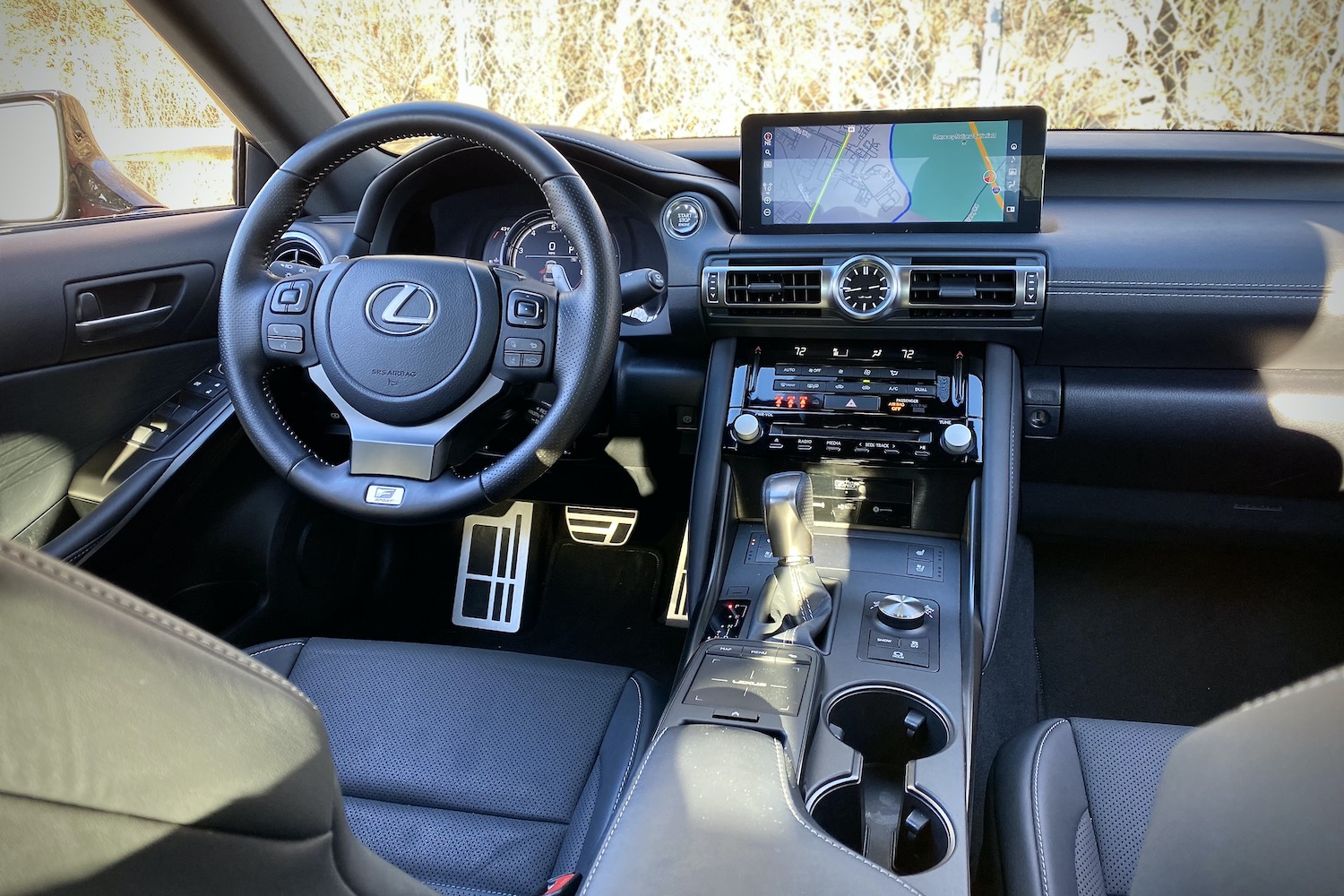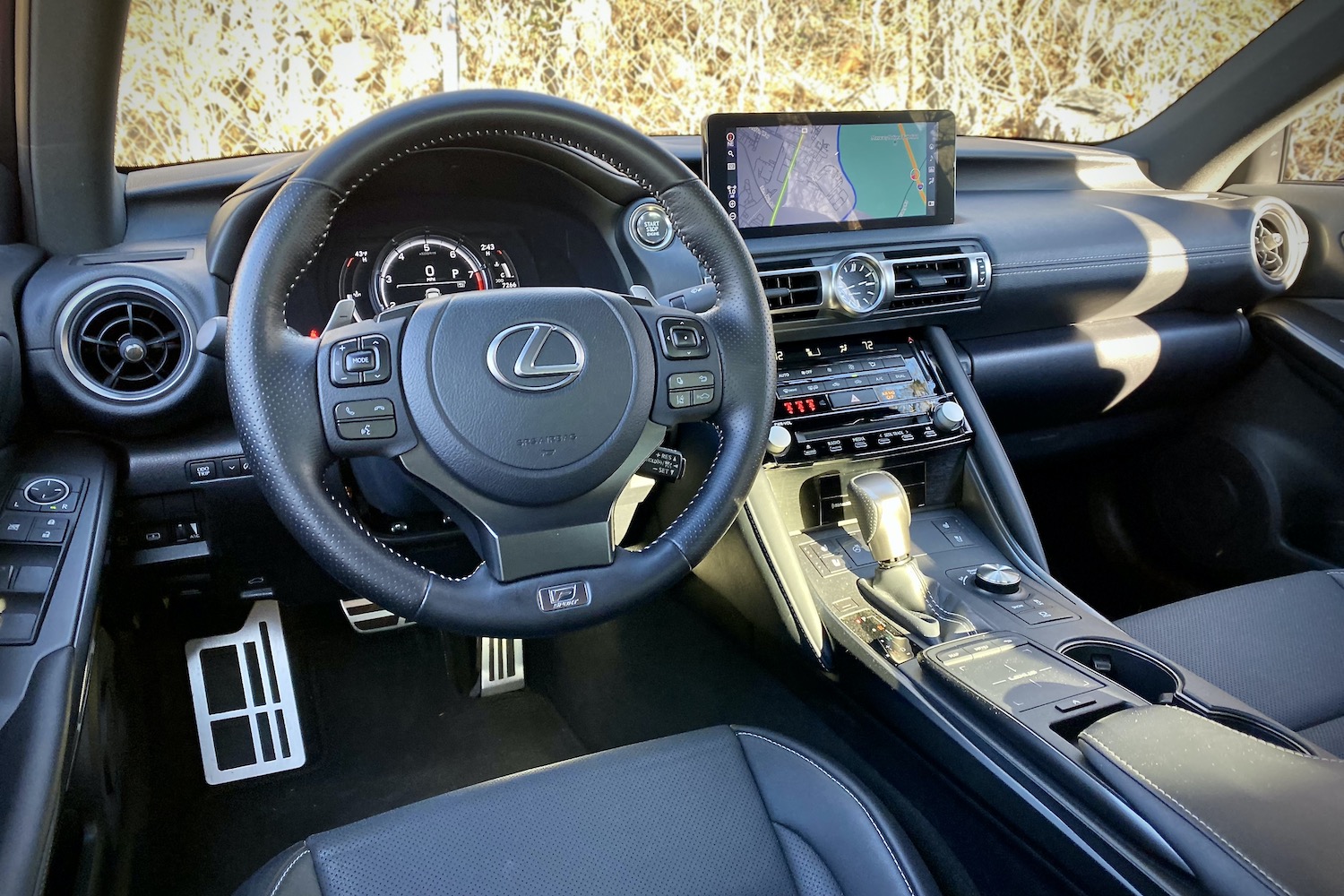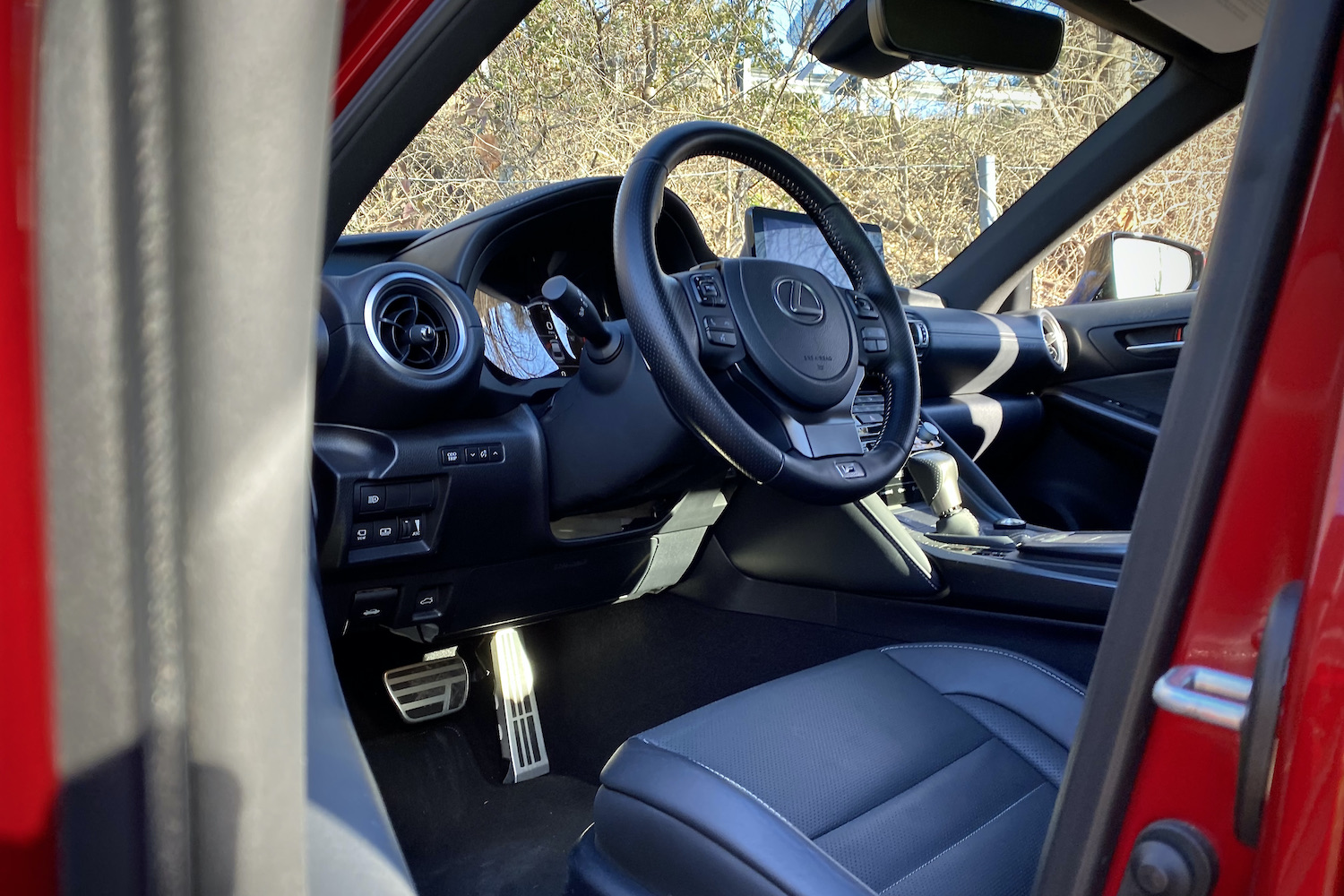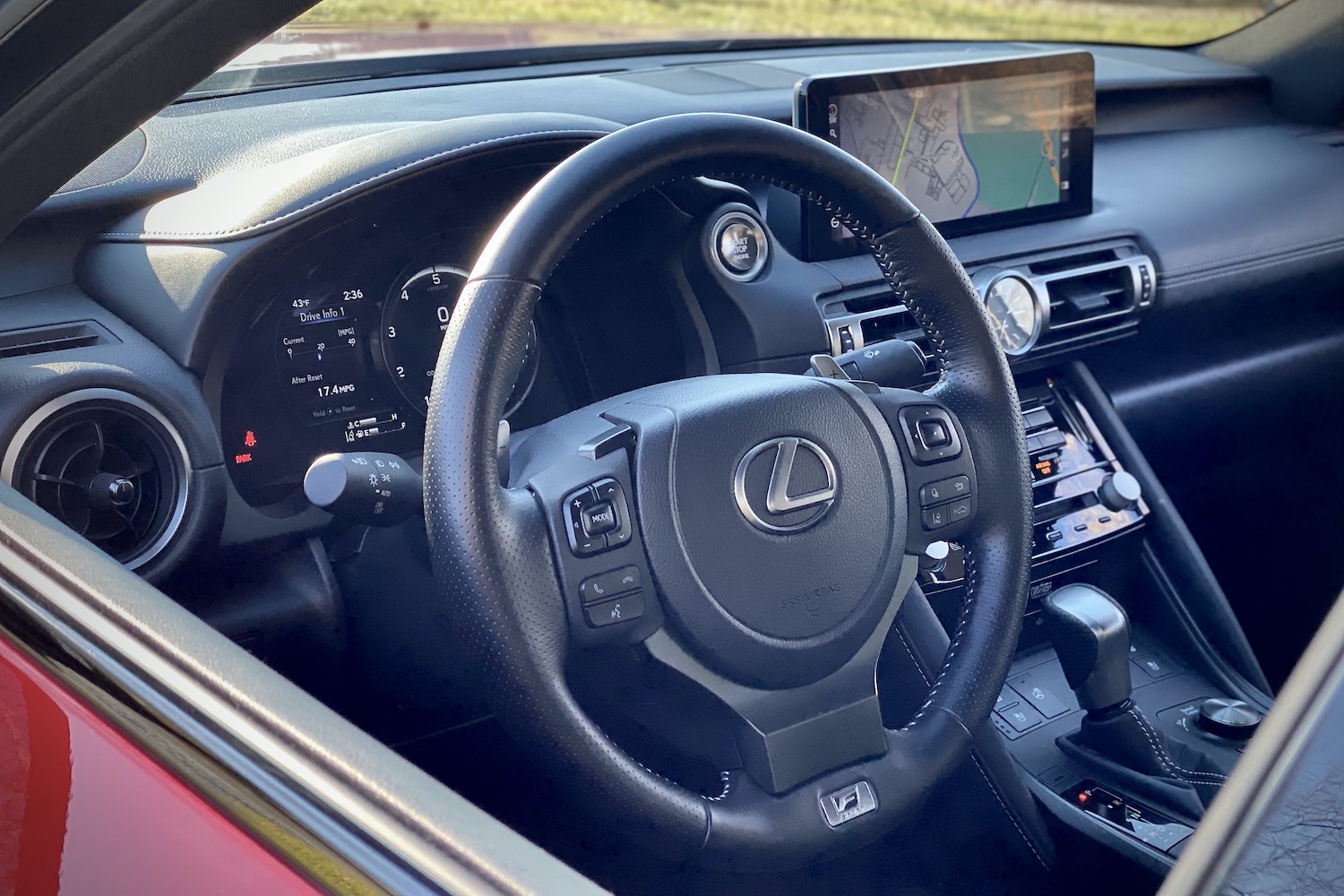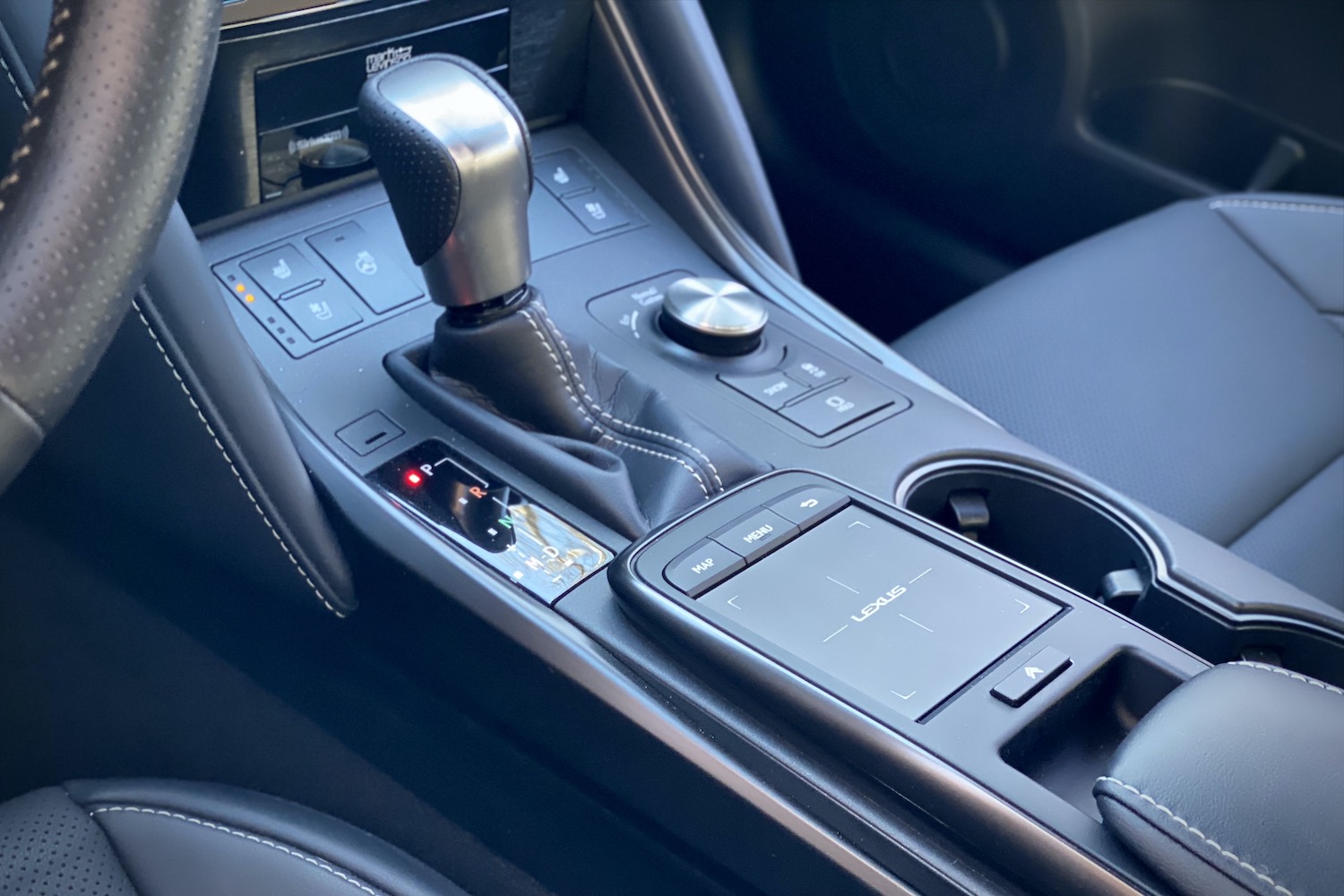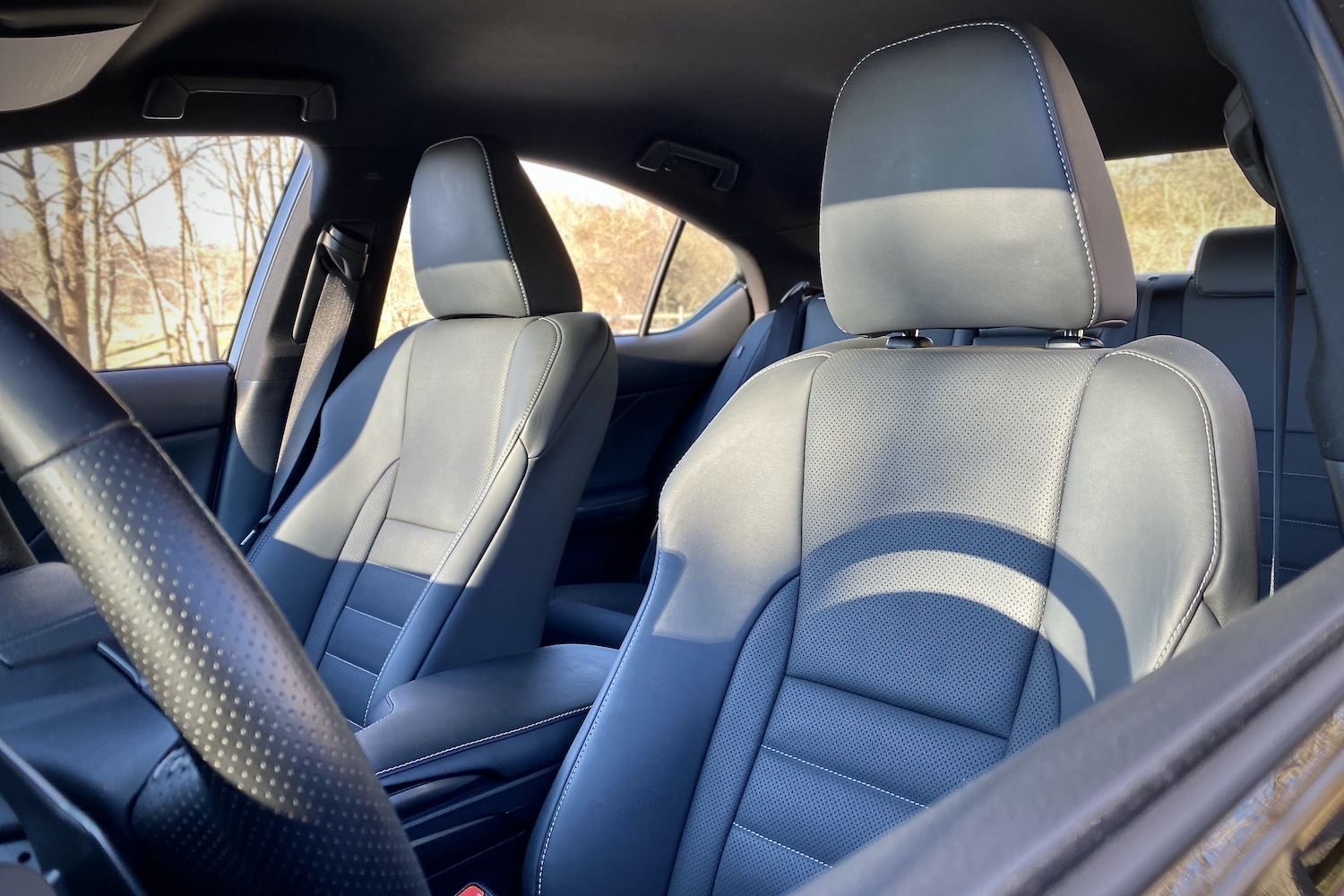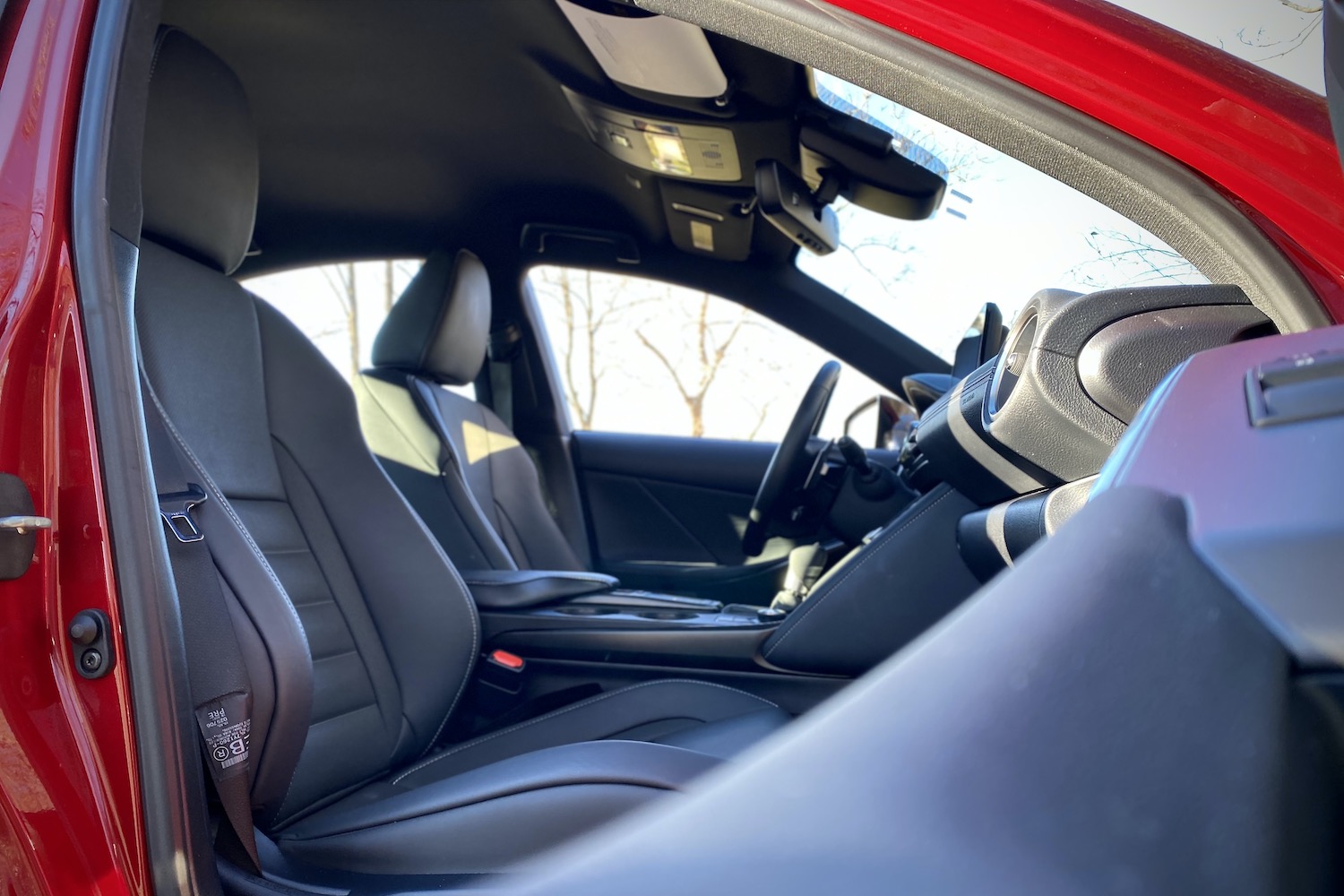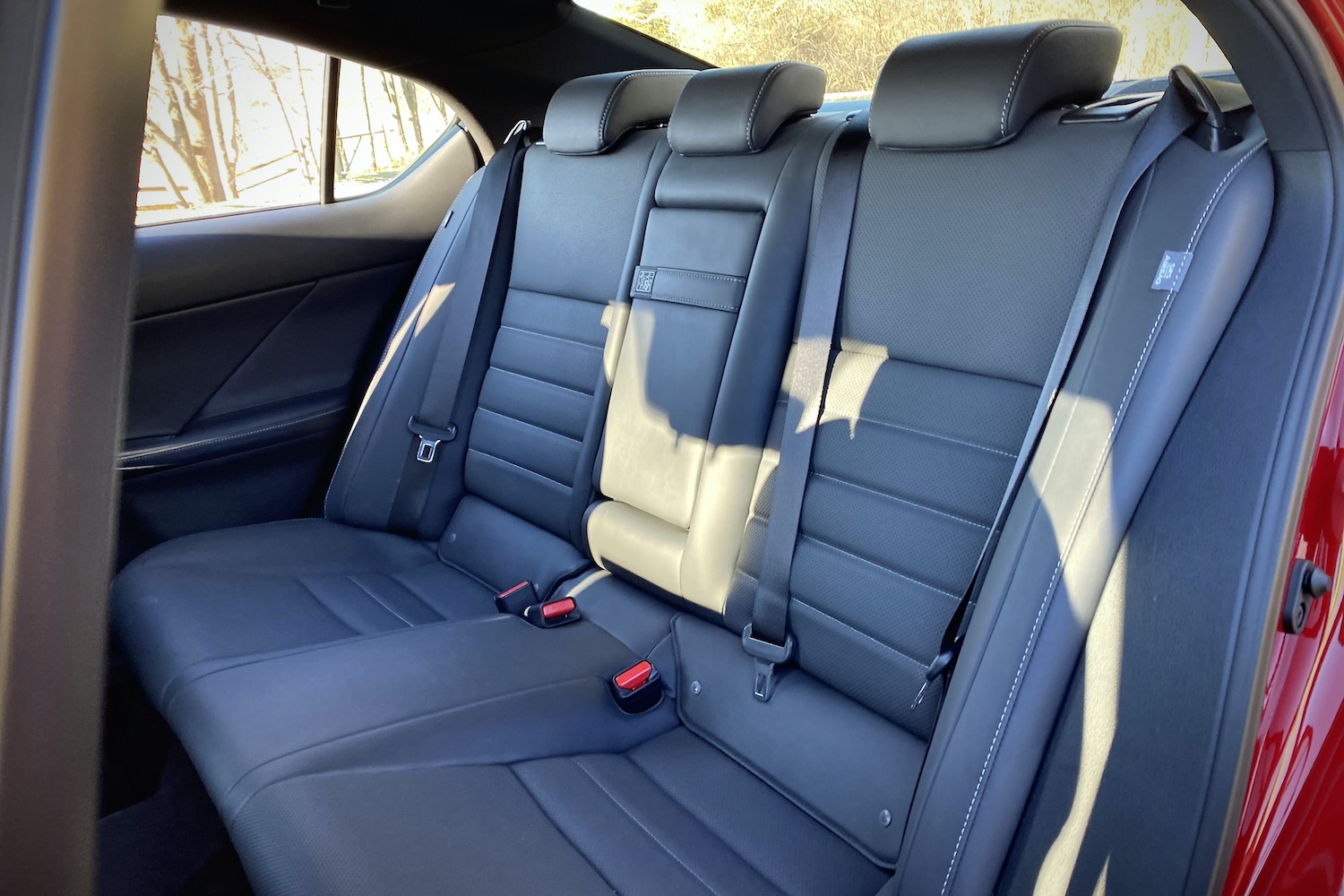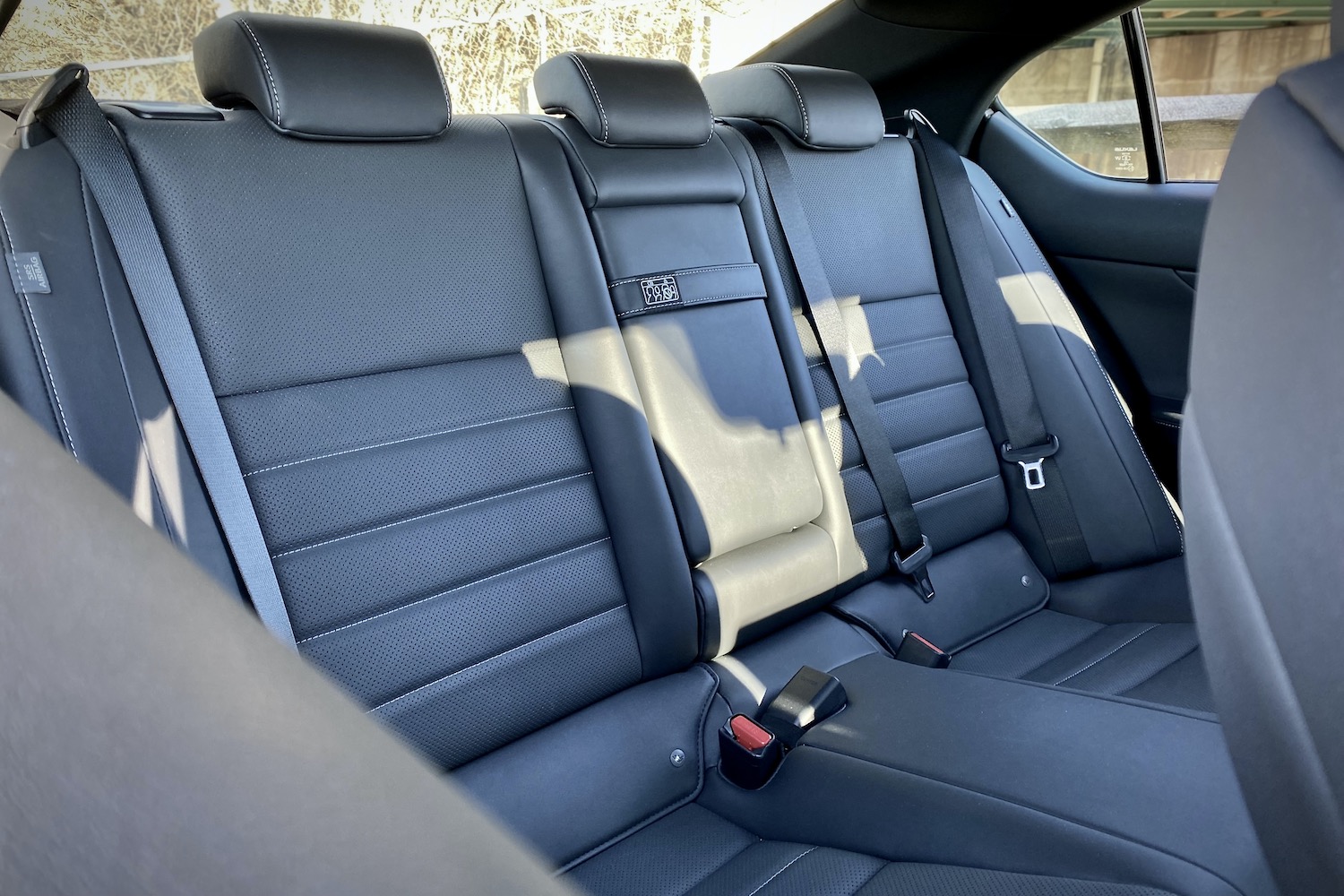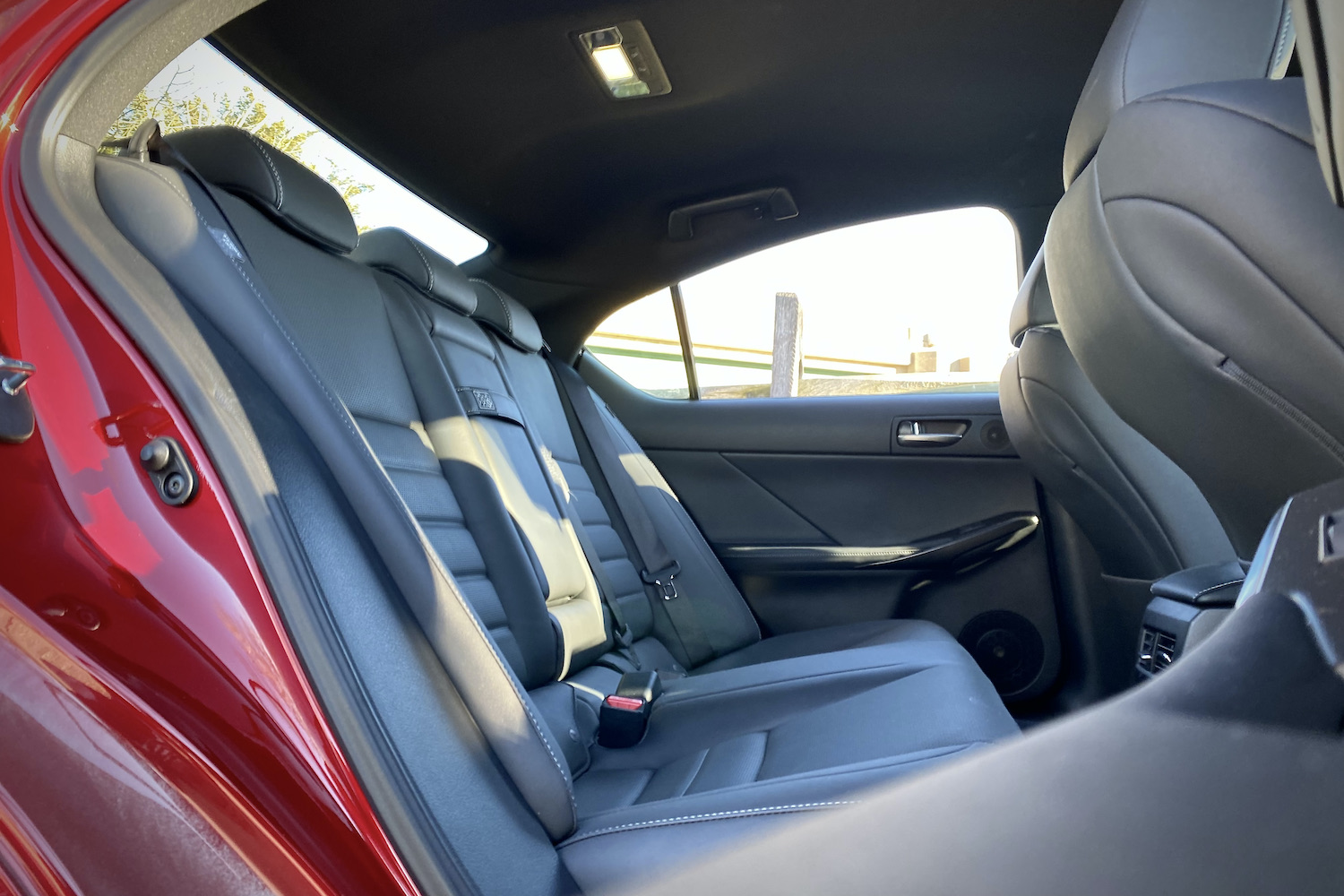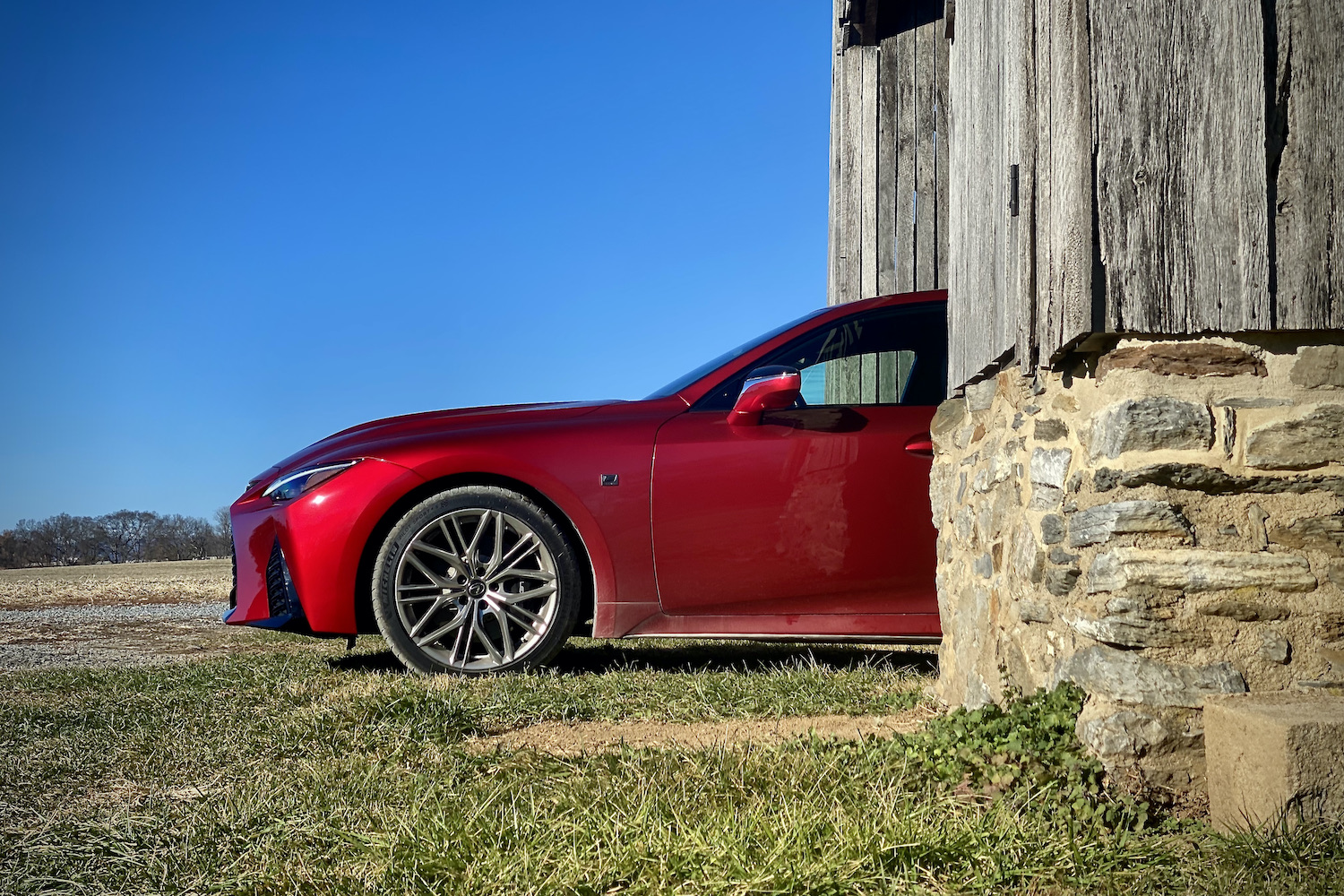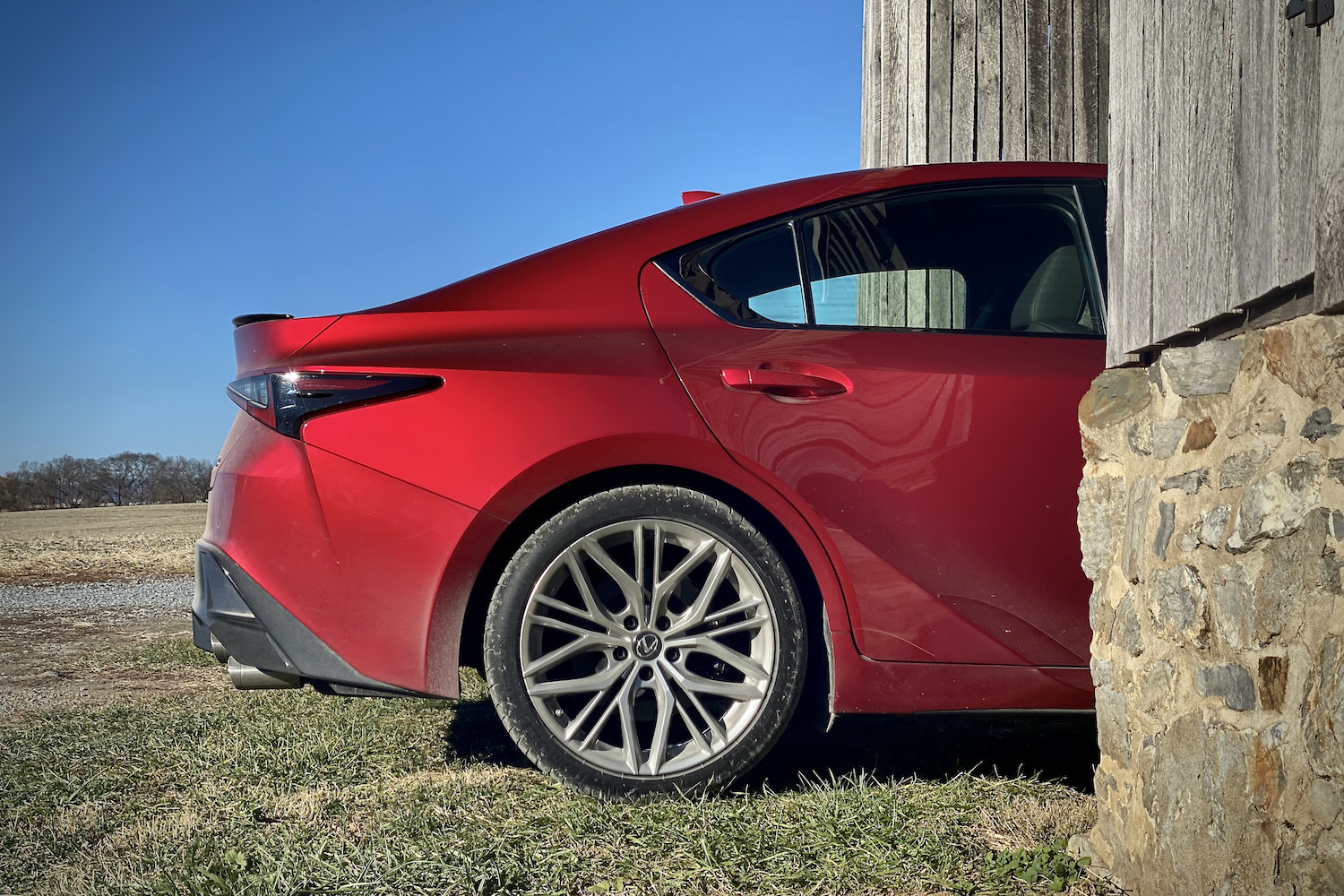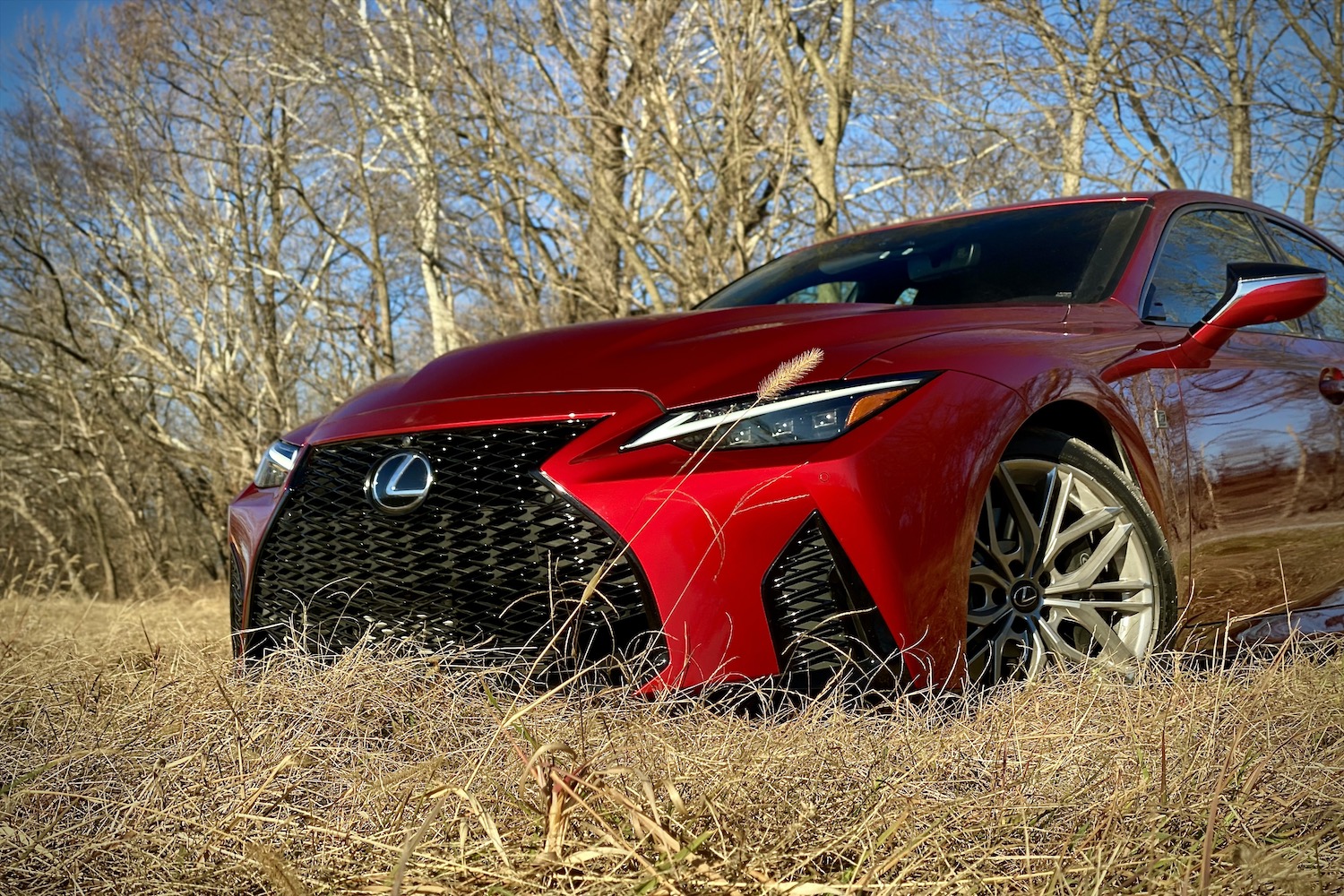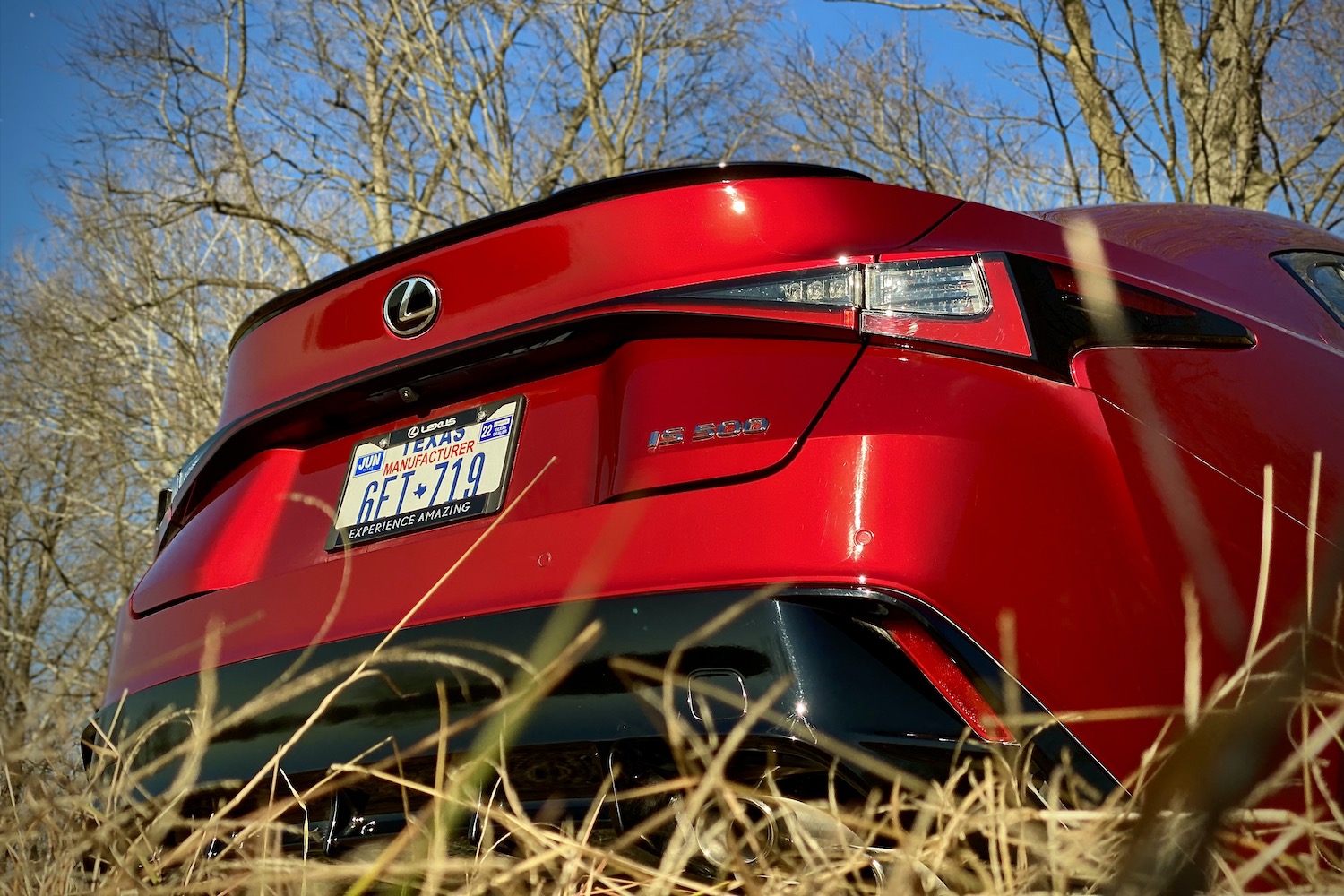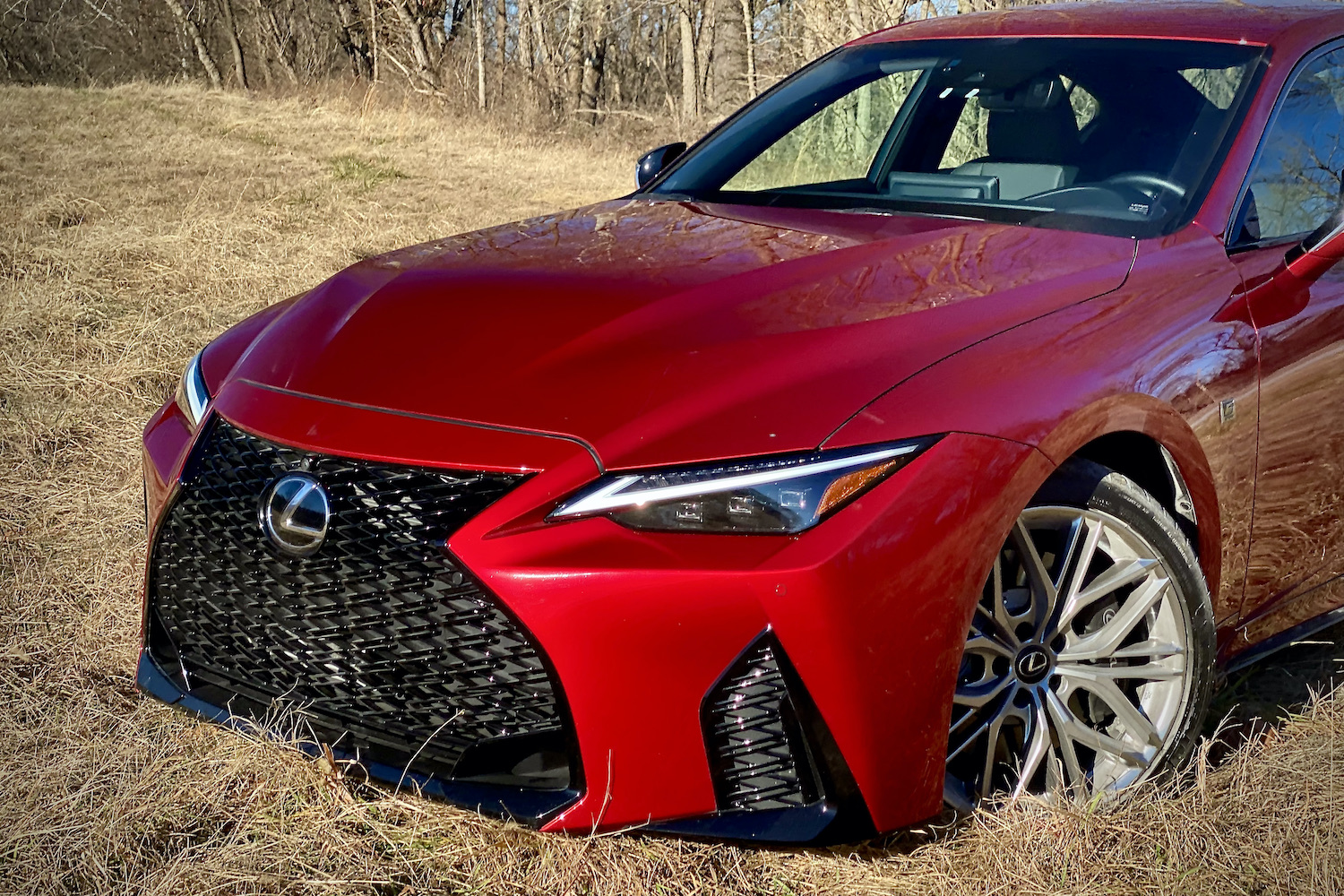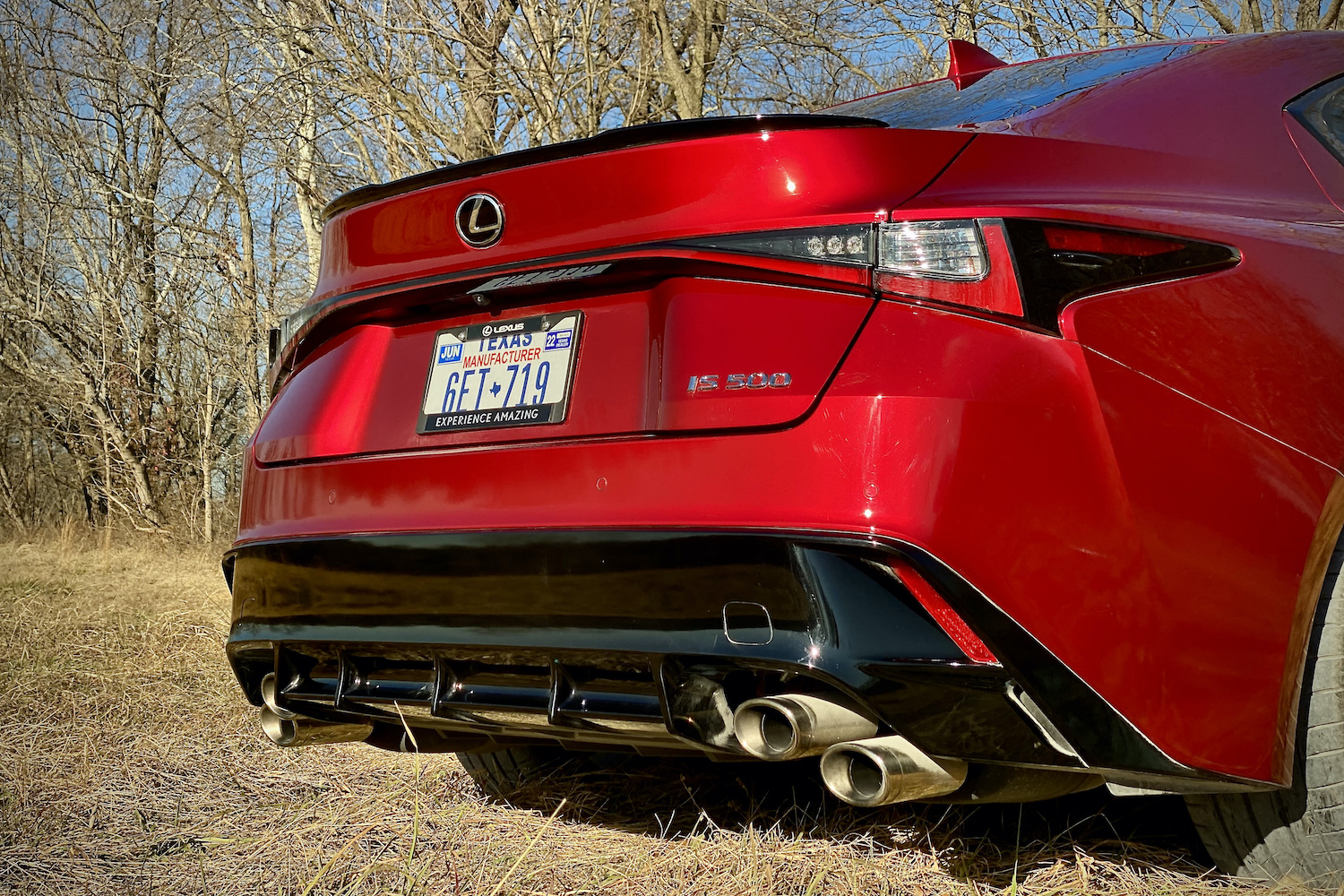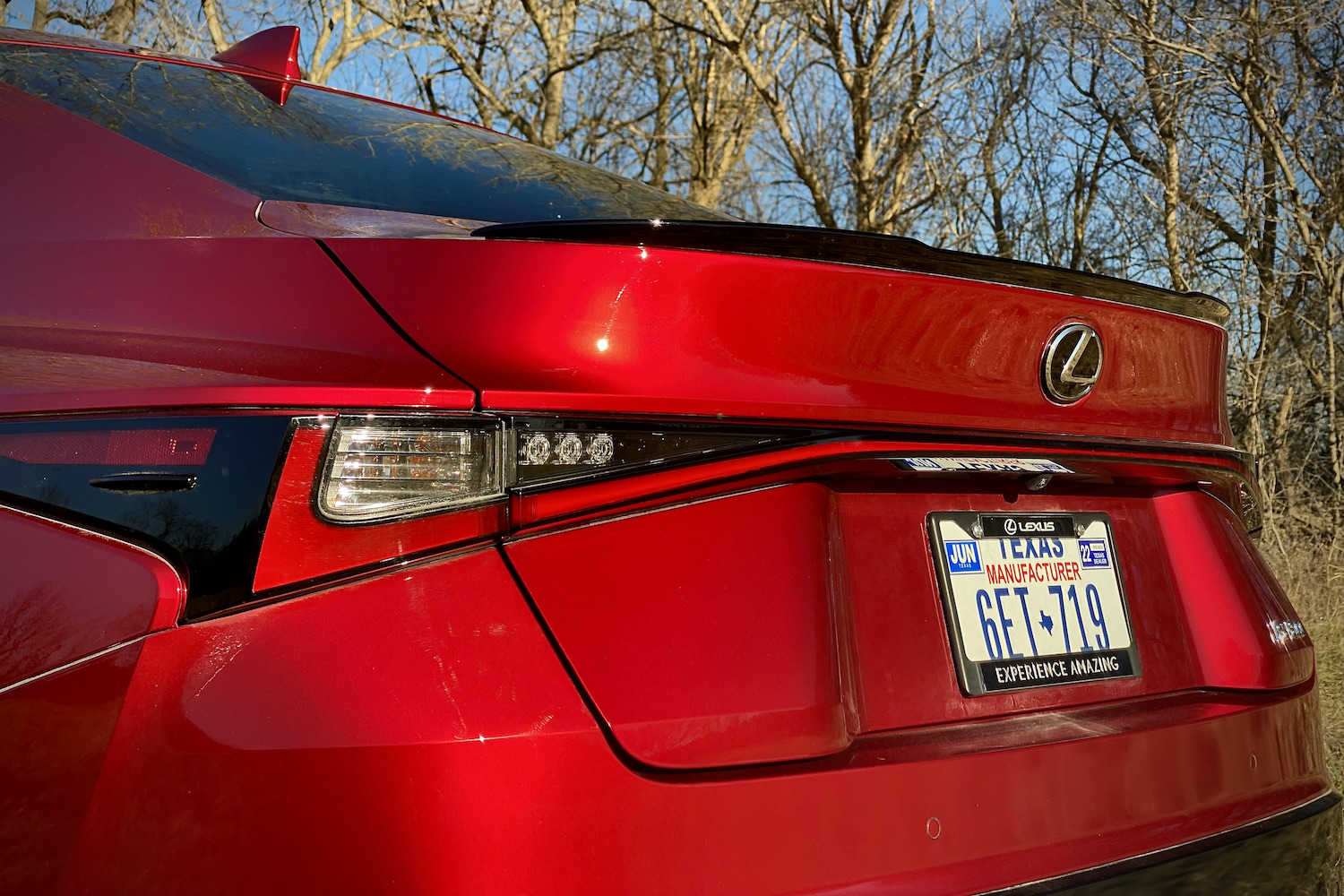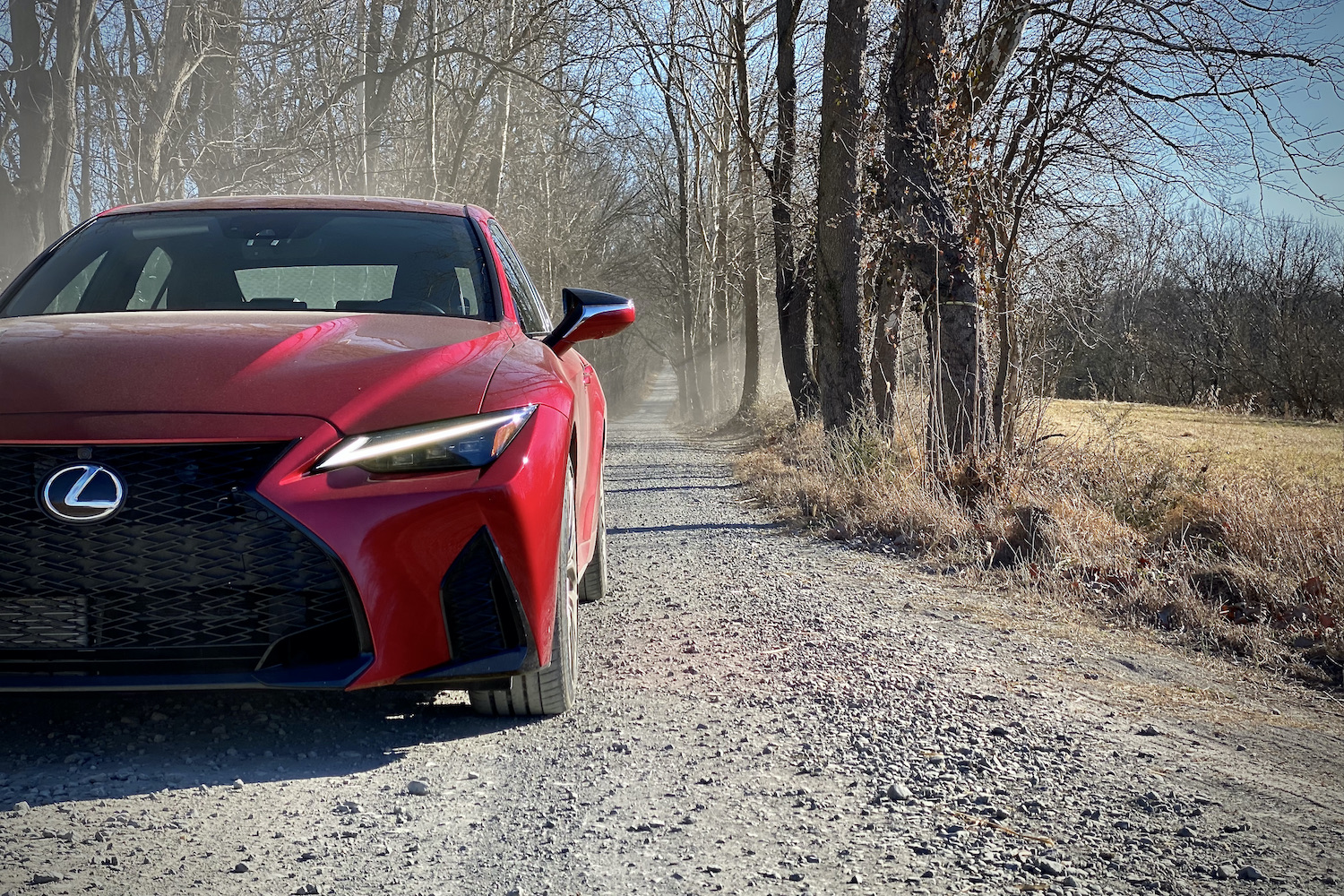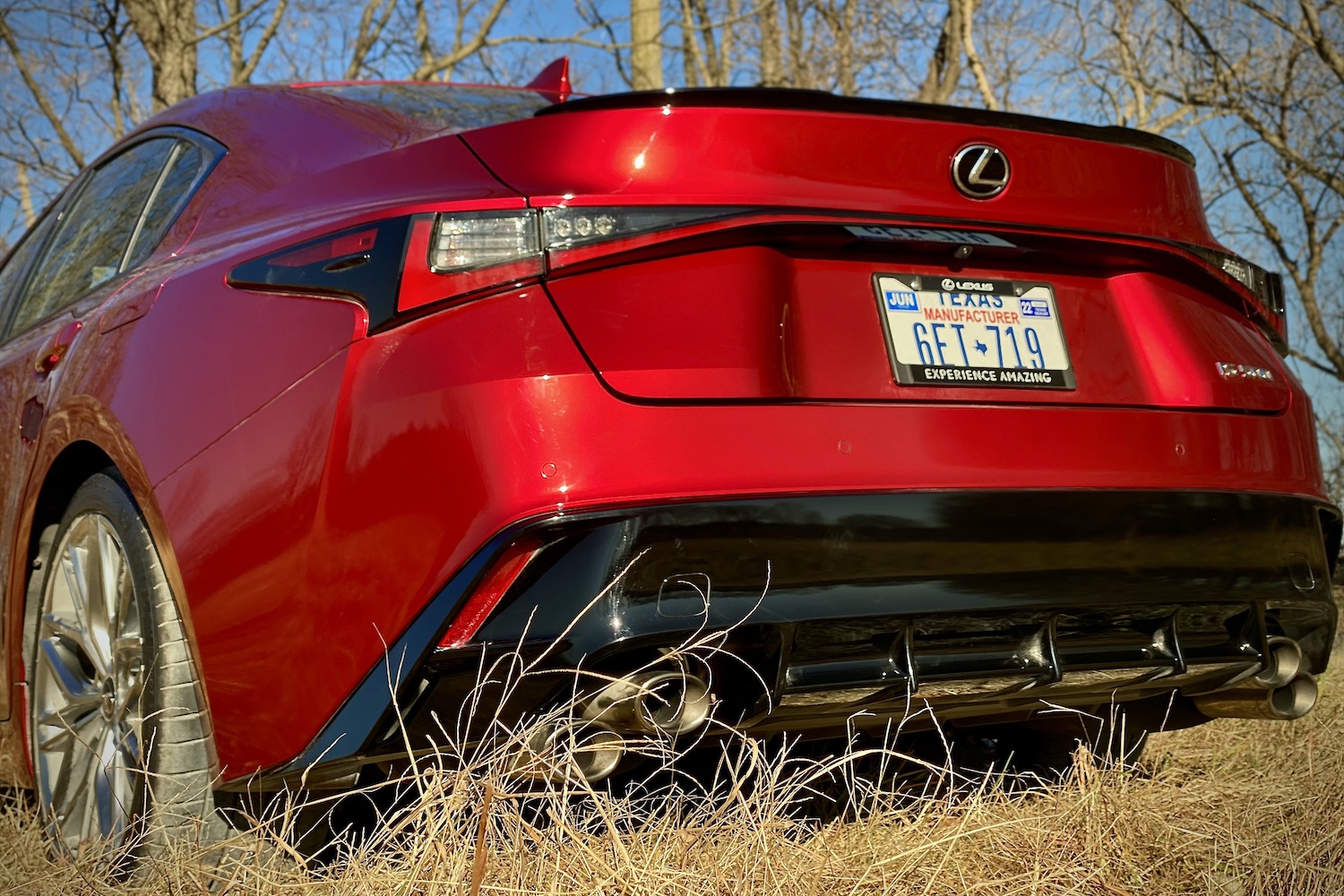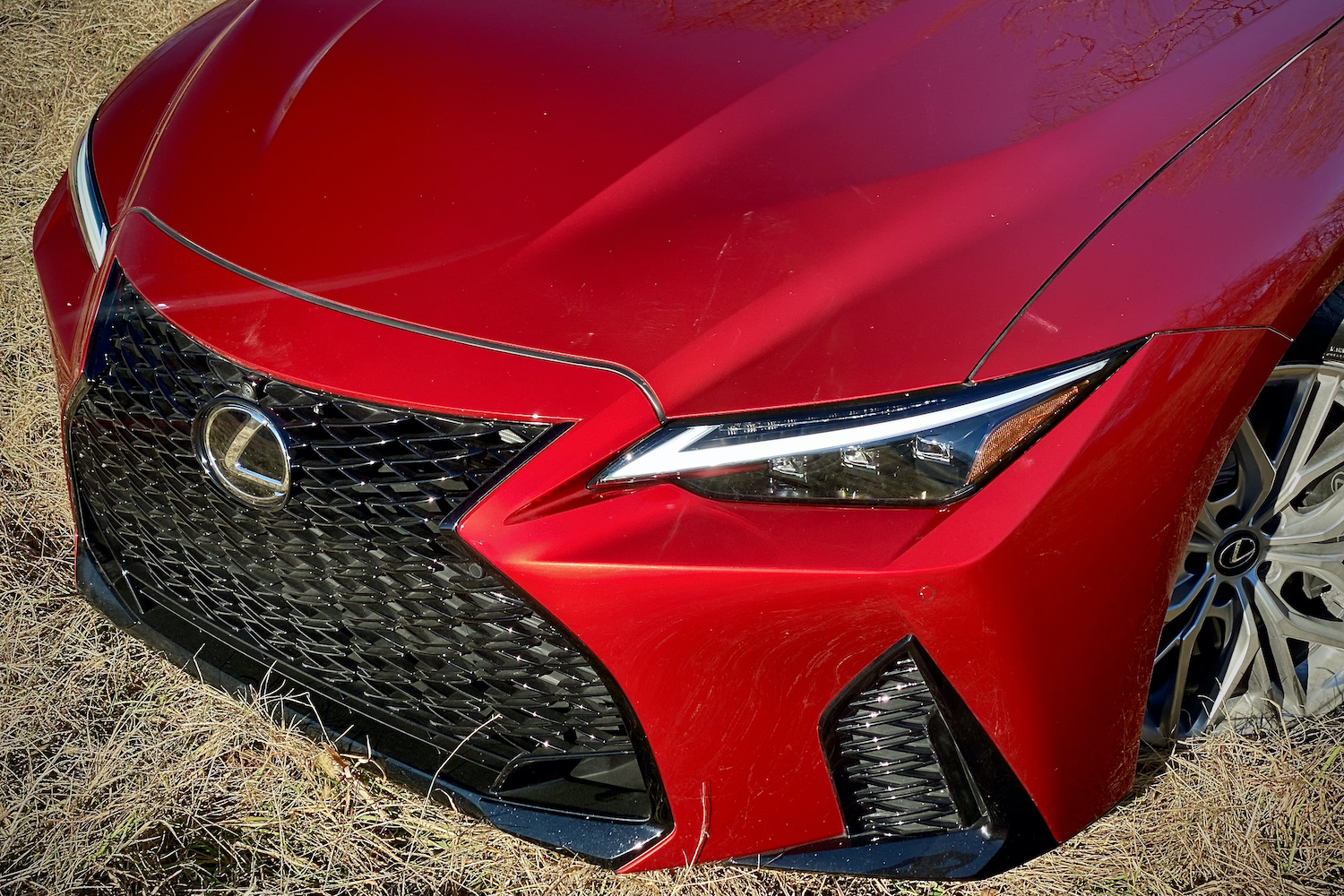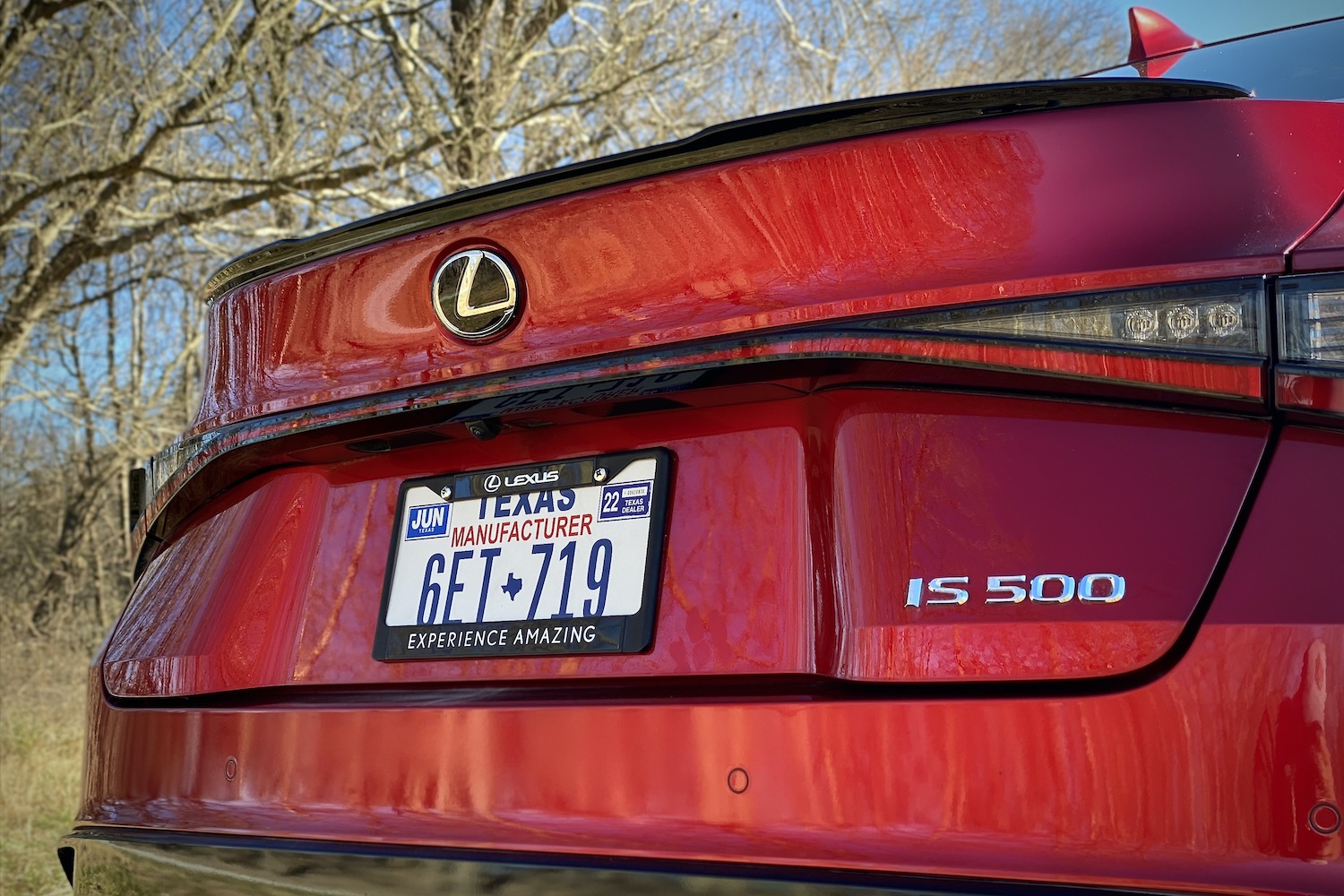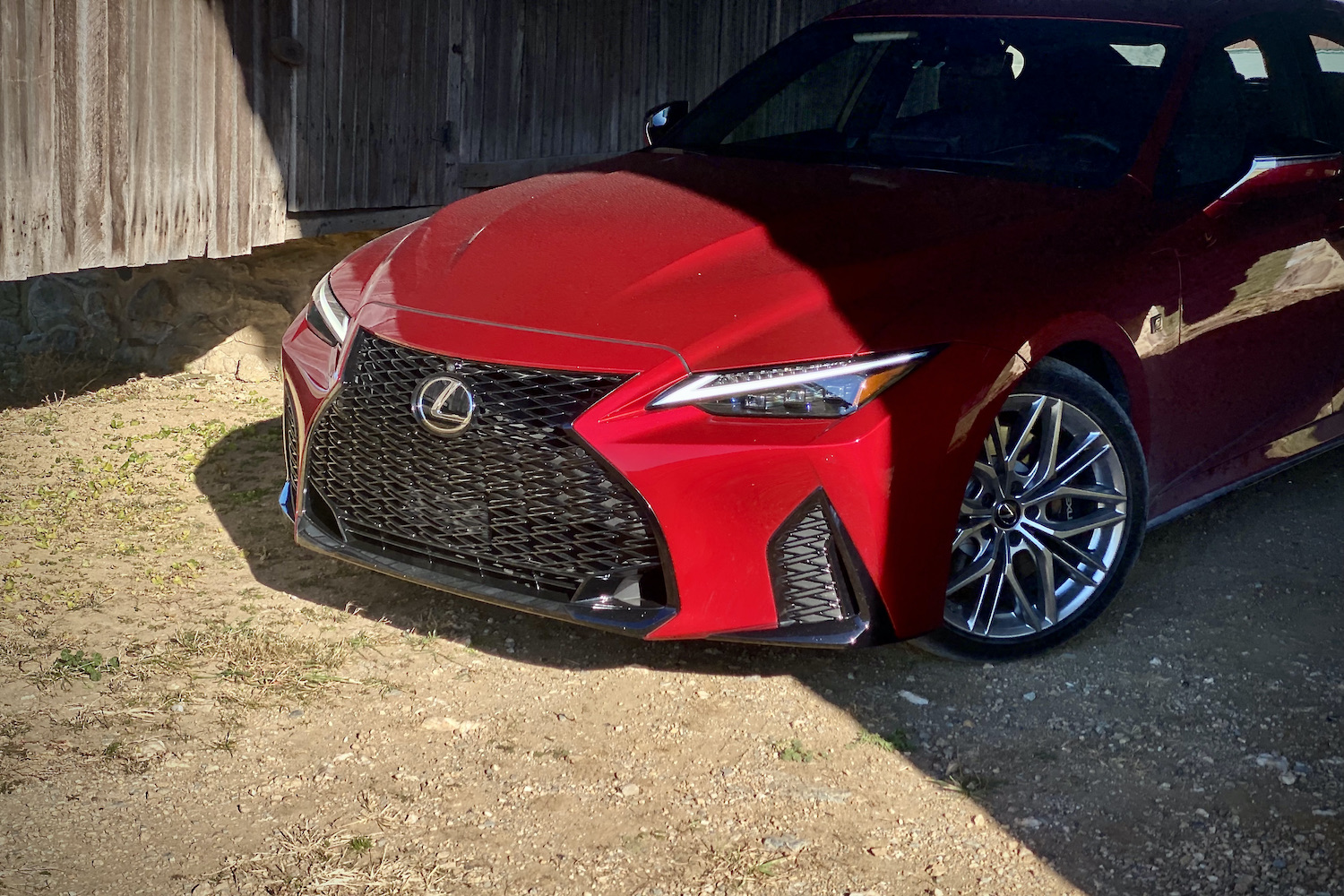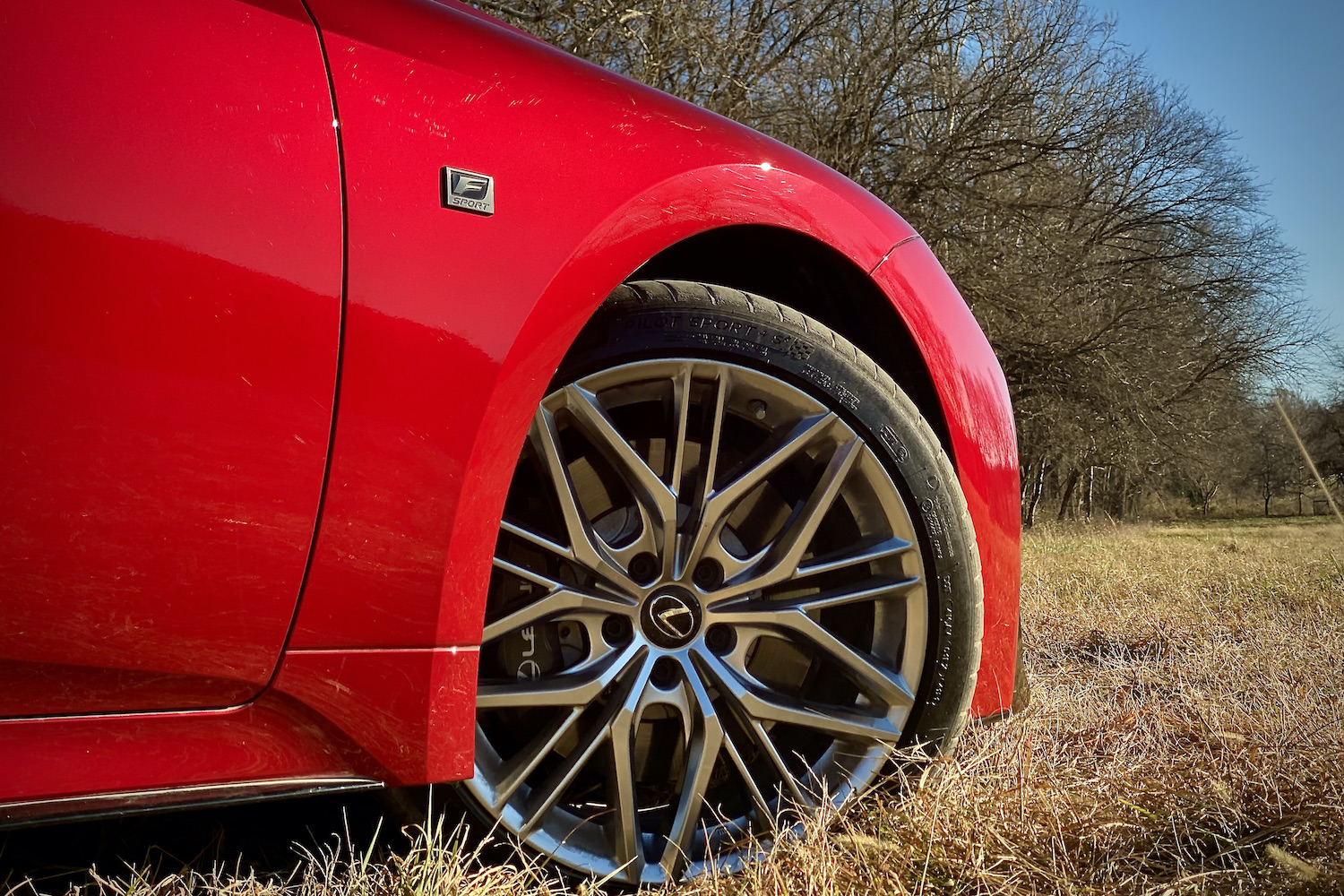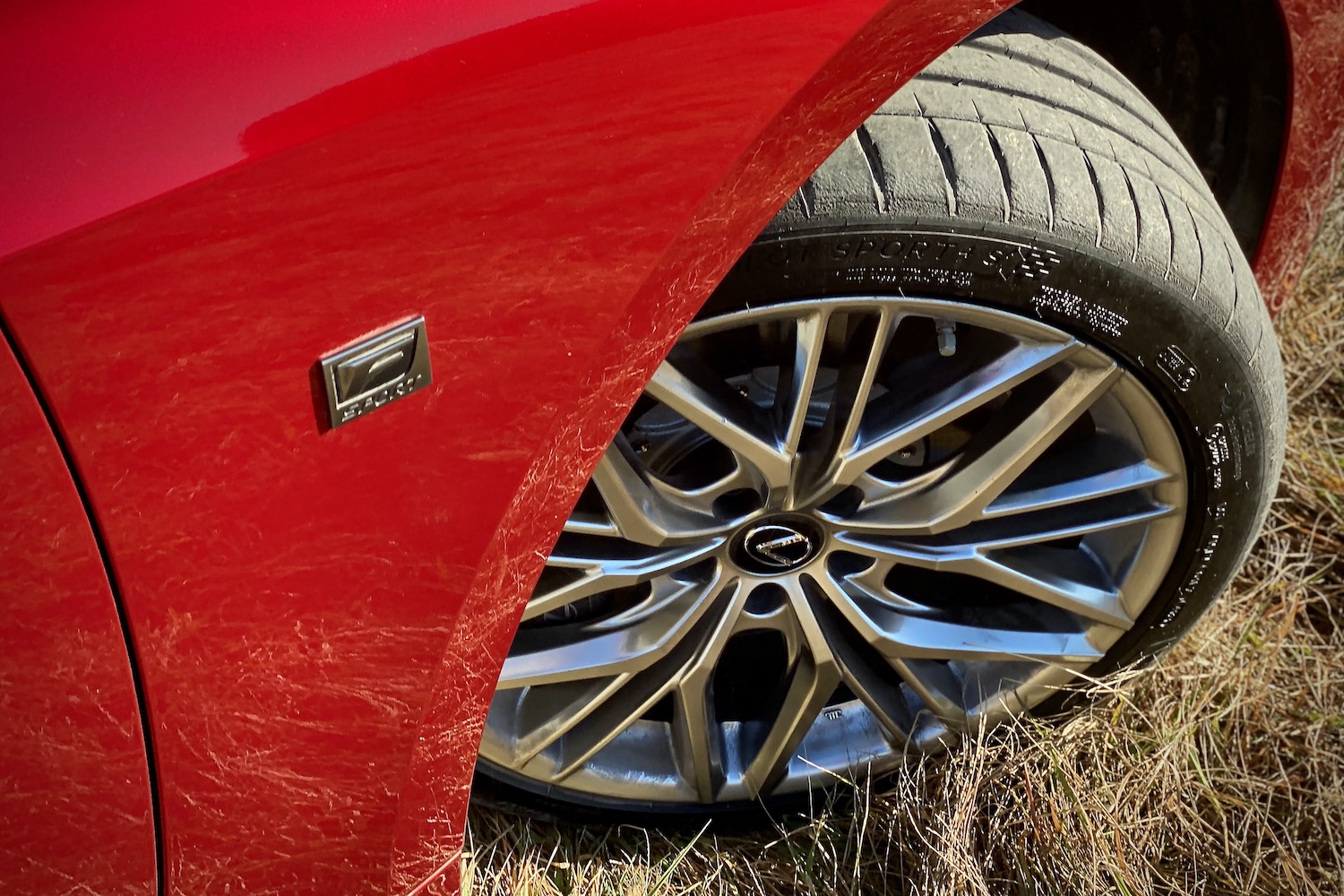With a bulging hood that hides a V8 engine and stacked quad exhaust outlets, it’s easy to look at the 2022 Lexus IS 500 F Sport Performance and assume it’s a rock-hard sports sedan with washboard abs. Looks can be deceiving, though, as can the allure of a naturally aspirated V8 engine. Slide into the IS 500’s seat with a preconceived notion that it will excite and perform similarly to a product from a brand that uses M, RS, V, or AMG and you’re destined to be disappointed. Lexus’ latest sedan is not a track rat. It’s not a back-road carver, either. In today’s market of amplified sedans, the IS 500 is its own thing. That alone makes it an interesting option.
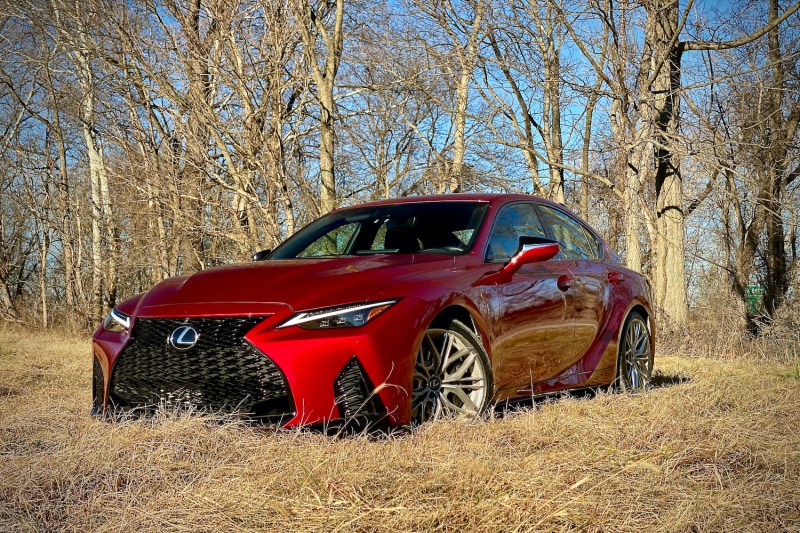
This isn’t the first time Lexus has taken on high-powered machines from Germany and the U.S. The Japanese brand first unveiled a V8-powered IS sedan in 2008 with the IS-F. That sedan now has a cult following, which explains why some owners are selling their 11-year-old cars for nearly $50,000. Built until 2014, Lexus pulled out all the stops with the IS-F to take on the Mercedes-Benz C63 AMG, BMW M3, Audi RS4, and Cadillac CTS-V. Eight long model years later, Lexus is finally offering a V8 again in the IS sedan. This time around, it has a different purpose.
Whether that’s a good thing boils down to what kind of driver and enthusiast you are. The IS 500 is one of the few polarizing vehicles on sale. It will draw its own set of fans that will appreciate the sedan’s V8 engine and relaxed character. Others will detest the sedan for not having the same sharp styling as rivals or for making the most of its V8 engine. Either way, the IS 500 deserves acclaim for being one of the few cars on the market to come with a naturally aspirated V8 at a time when a 70-degree day in December marks impending doom.
Design & Interior
The IS 500 shares the same overall design as the regular IS, which received a refreshed design for 2021. A honking V8 engine may lie dormant under the hood, but you’ll have to play a game of spot the differences if you want to get a hint of the model’s performance. The hood has a large bulge, there are unique 19-inch wheels, the trunk has a modest rear spoiler, and staggered quad exhaust tips — a throwback feature found on the IS-F — are the only true indicators that this model has some extra grunt over others in the lineup.
It’s a similar story on the inside where the IS sedan continues to have the same design as the model that came out in 2013. A refreshed exterior design did a lot for the IS, but the sedan is in dire need of some attention on the inside. The center console is as outdated as an iPod and is about as stylish, as well. The available 10.3-inch touchscreen is more of an annoyance than anything else, with tricky menus and dated graphics. The rearview camera is atrocious, the touchpad controller deserves to be burned, and the way the touchscreen is integrated into the dashboard feels like an afterthought. If Lexus offered a package where the touchscreen and touchpad controller could be removed, it would be a popular option.
There are some large issues with the IS 500’s interior, but it still delivers a luxurious experience, while feeling sporty. The chunky steering wheel and shift knob that’s slightly angled toward the driver is a nice touch. You won’t find much wrong with the plush seats, and the cabin remains quiet when you’re not trying to raise some hell. Sitting in the back is a different story because of the tight legroom, but that’s par for the course for a sedan of this size.
Lexus can’t live up to the opulent cabins in cars with a Mercedes badge, the modern designs in BMWs, or the simplicity found in Audis. Lexus has other products that provide shock and awe. The IS 500 struggles to find its own niche. And you can’t help but feel like you’ve been gypped. This is the exact same cabin as the IS 350, down to the analog clock and transforming digital instrument cluster. Carbon-fiber trim pieces, larger shift paddles, an updated instrument cluster, anything would’ve helped the sedan’s interior feel as special as the engine that powers it.
Driving Experience
As one would expect, the 5.0-liter V8 engine is the star of the show. Amazingly, Lexus used the same V8 from the IS-F, but bumped power to 472 horsepower and 395 pound-feet of torque. The V8 feels old school, bursting to life with the same grumpiness as a 1,000-year-old dragon. Once awake, the engine yearns to rev to the 7,300-rpm redline, filling the cabin with a rich sound that will scare unsuspecting passengers at full throttle. There’s no fake noise that’s being piped into the cabin, either. Lexus’ engineers fitted the IS 500 with an intake bypass that opens up just shy of the 3,000 rpm mark, letting the V8’s song fill the cabin.
For a large V8 engine, the 5.0-liter in the IS 500 loves to rev and rev and rev. It doesn’t want to stop. It pulls hard to redline and then wants to do the whole shindig over again. Power is routed solely to the rear wheels through Bridgestone Potenza tires that don’t have the capability to rein in the V8’s grunt. Burnouts are simple to pull off and a damp road results in wheelspin at up to third gear. You’ll want to exercise some caution when passing on the highway in less than pristine weather.
Straight-line speed is by far the most impressive one of the IS 500’s qualities. Zero to 60 mph takes 4.4 seconds, a respectable time for any modern vehicle these days. The eight-speed automatic transmission upshifts quickly under hard acceleration, but jolts and buckles at low speed in manual mode. Downshifts are far slower and jerkier, regardless of whether the sedan is in one of its sportier drive modes. While the engine is ready for the big leagues, the gearbox is still in the minors, waiting to be called up.
The old-fashioned sedan doesn’t offer the same sports sedan handling you’ll find with the M3 or C63 AMG. In fact, it’s more on par with less powerful options like the BMW M340i, Audi S4, Mercedes-AMG C43, and Cadillac CT5-V, all of which come with turbocharged six-cylinder engines. It’s right there in acceleration, but the handling doesn’t quite live up to segment leaders. The adaptive suspension is more suited for daily use and ironing out imperfections instead of blasting down a windy road. There’s body roll, weight transfer under hard acceleration, and an overall lack of grip.
It’s very reminiscent of old AMGs. Incredibly quick in a straight line, but not exactly the right tool for a windy road. But these aren’t bad qualities. Most people have no interest in taking their vehicle to the track. Suffering regularly for the extra tenth on a track that you’ll never visit is about as smart as stuffing $30,000 under your mattress for the apocalypse. Instead, the IS 500 is a good mix. There’s tail-out hooliganism to be had, as well as a relaxed character for a highway cruise. Which one you want is like choosing a glazed or a cream-filled donut. It’s all up to you with the push of a few buttons and some extra throttle input.
Should You Get One?
Yeah. Beyond the fact the 2022 Lexus IS 500 is one of the few cars on the market to come with a naturally aspirated V8 engine, this is a car that’s filled with character. It’s not the sharpest handling car, the most luxurious, or the most high-tech, but it’s a charming, old-school driver’s car. Aimed at consumers that want to look back instead of ahead, the IS 500 gives up some performance in favor of an agreeable temperament. Even Lexus knows the IS 500 can’t hang with the big boys. Remember that going into your first drive, and you’re sure to get a modern classic that will remind you of yesteryear.

